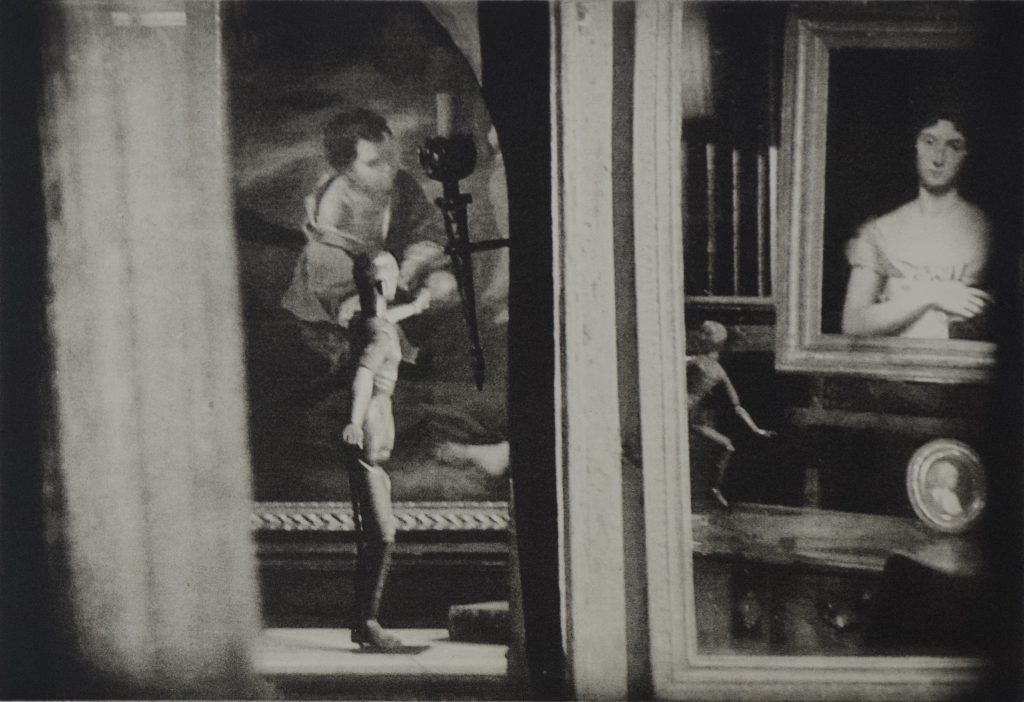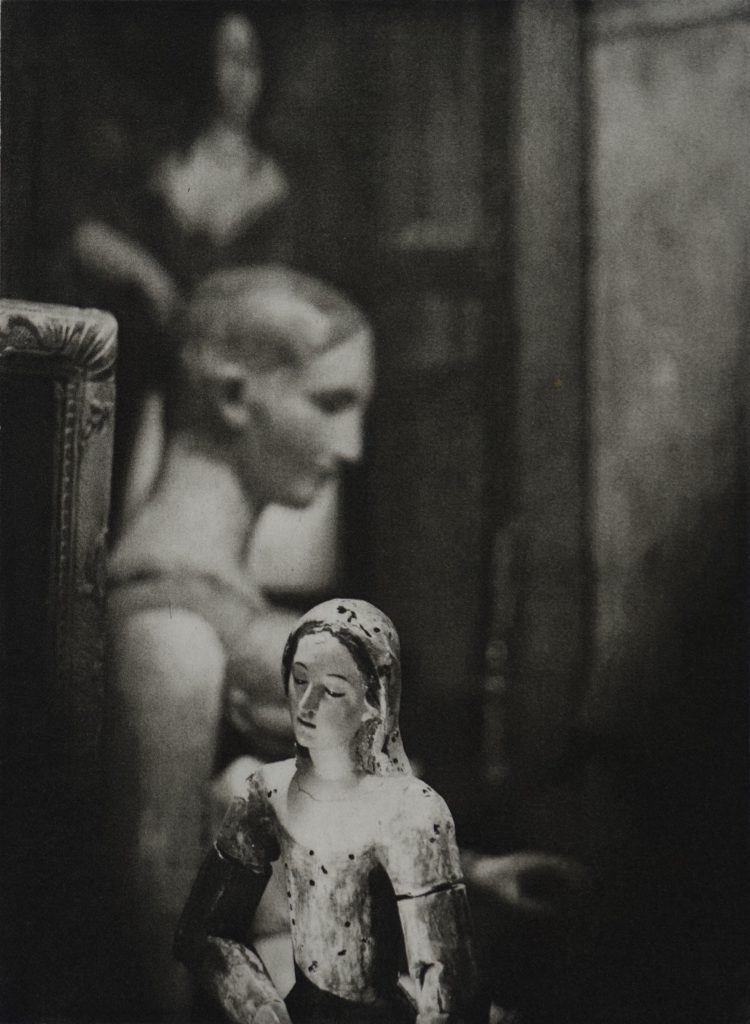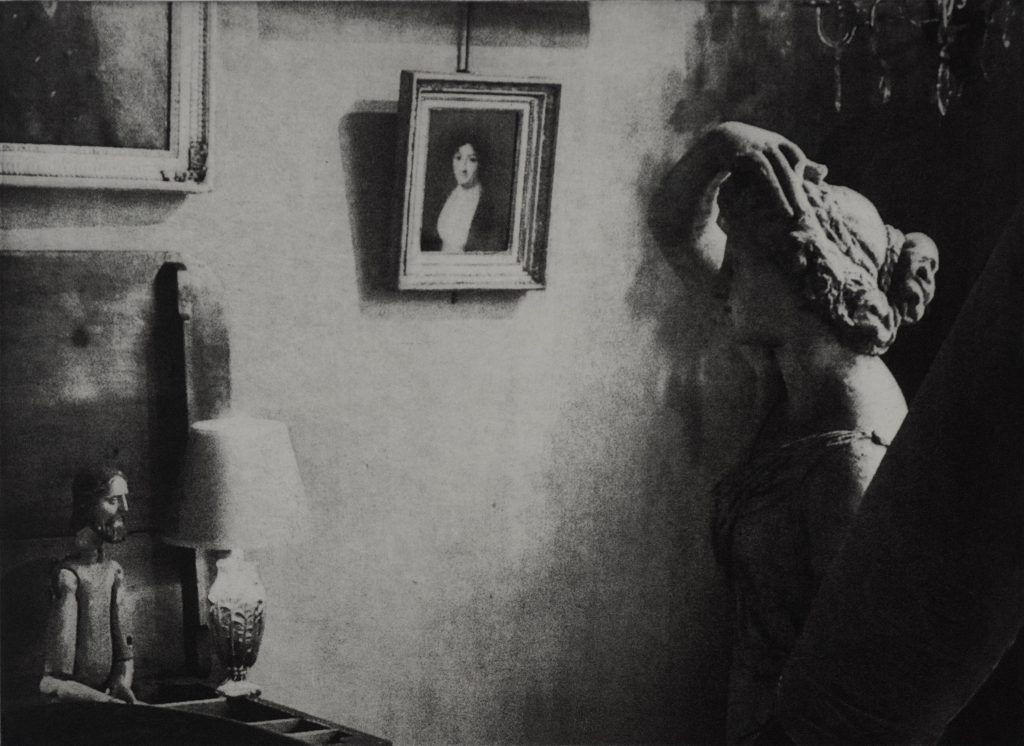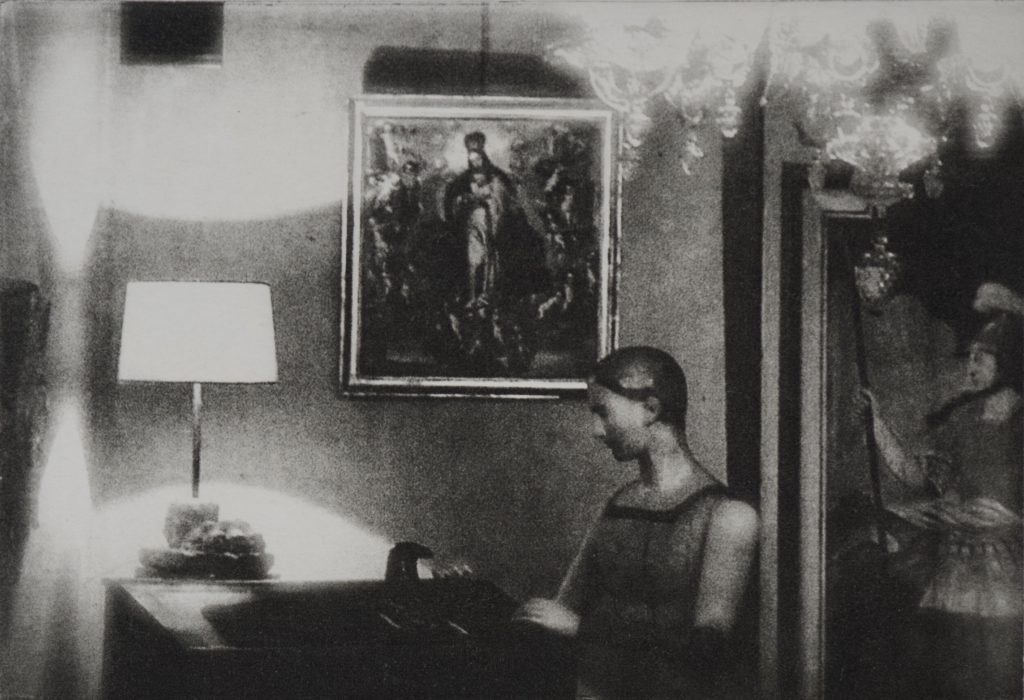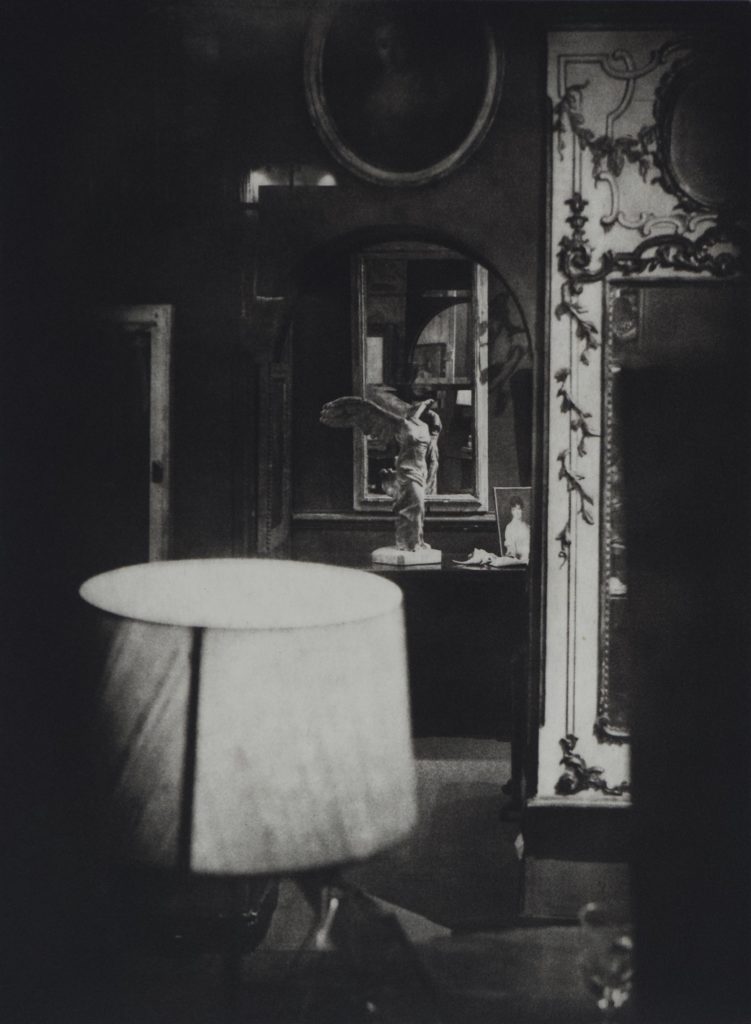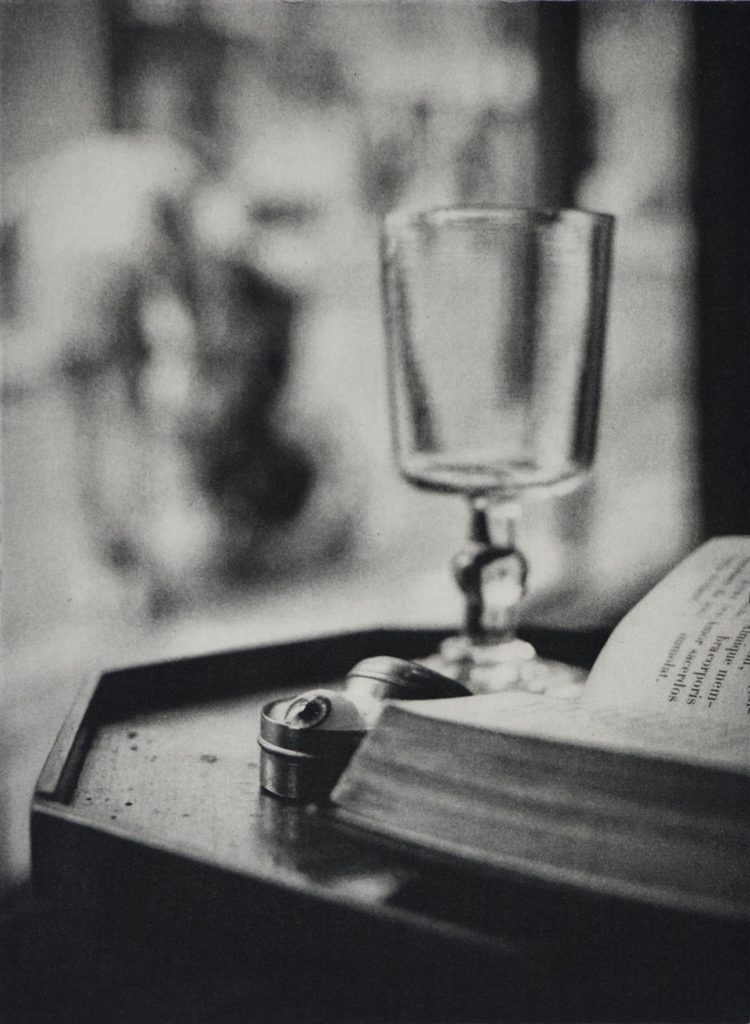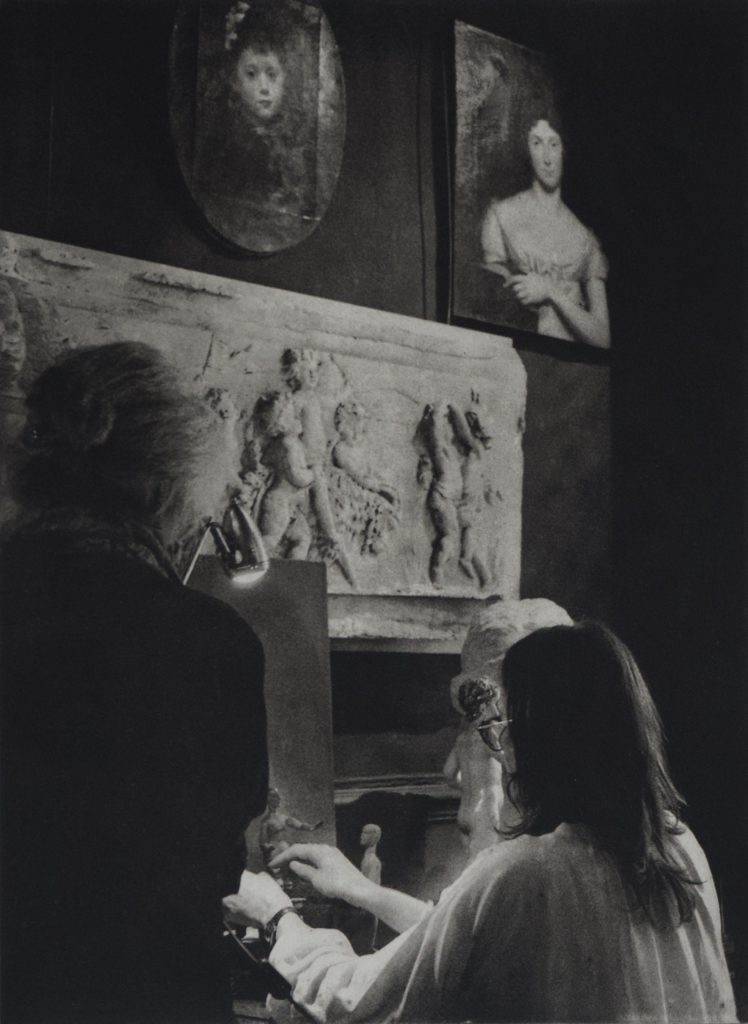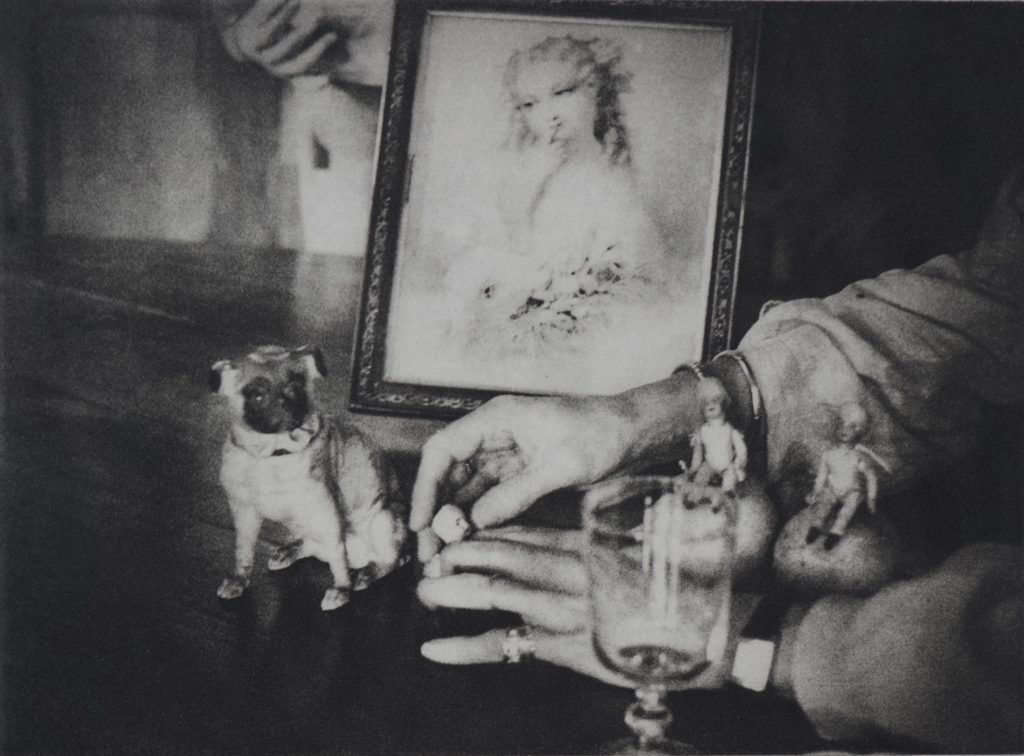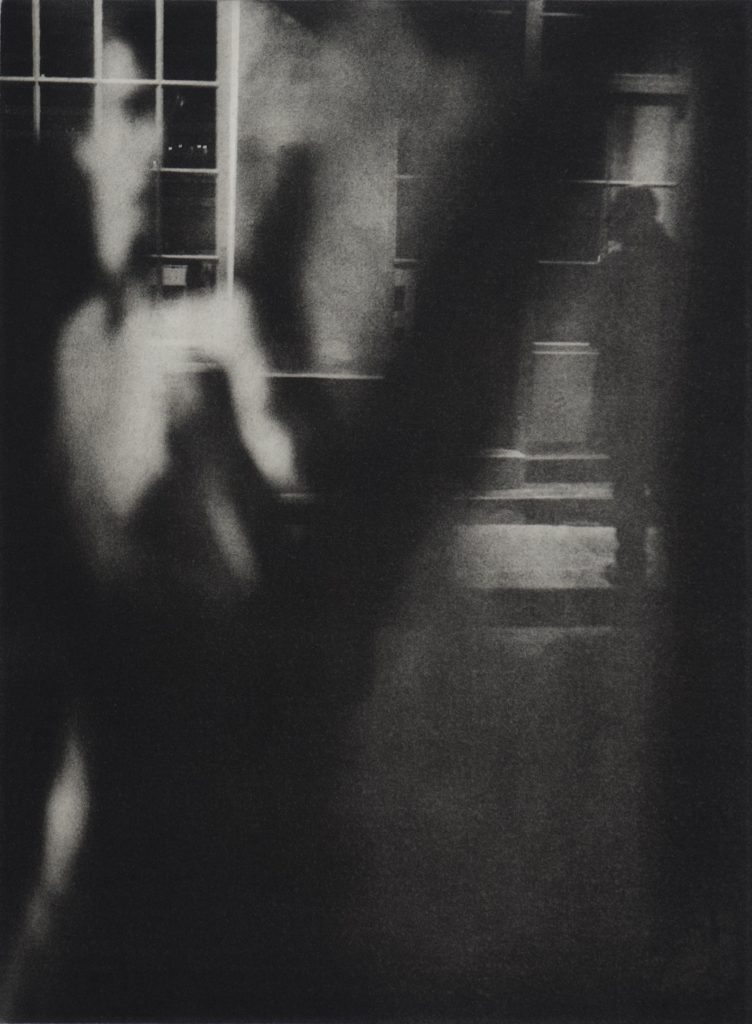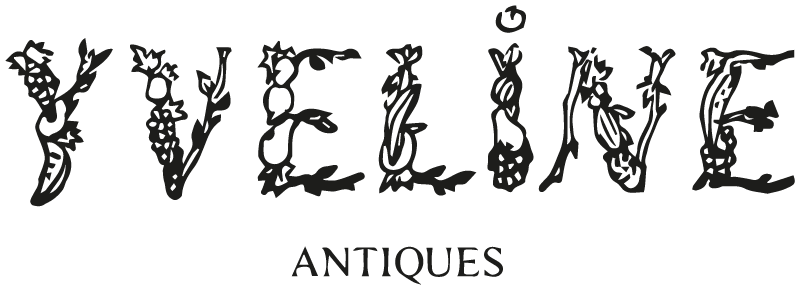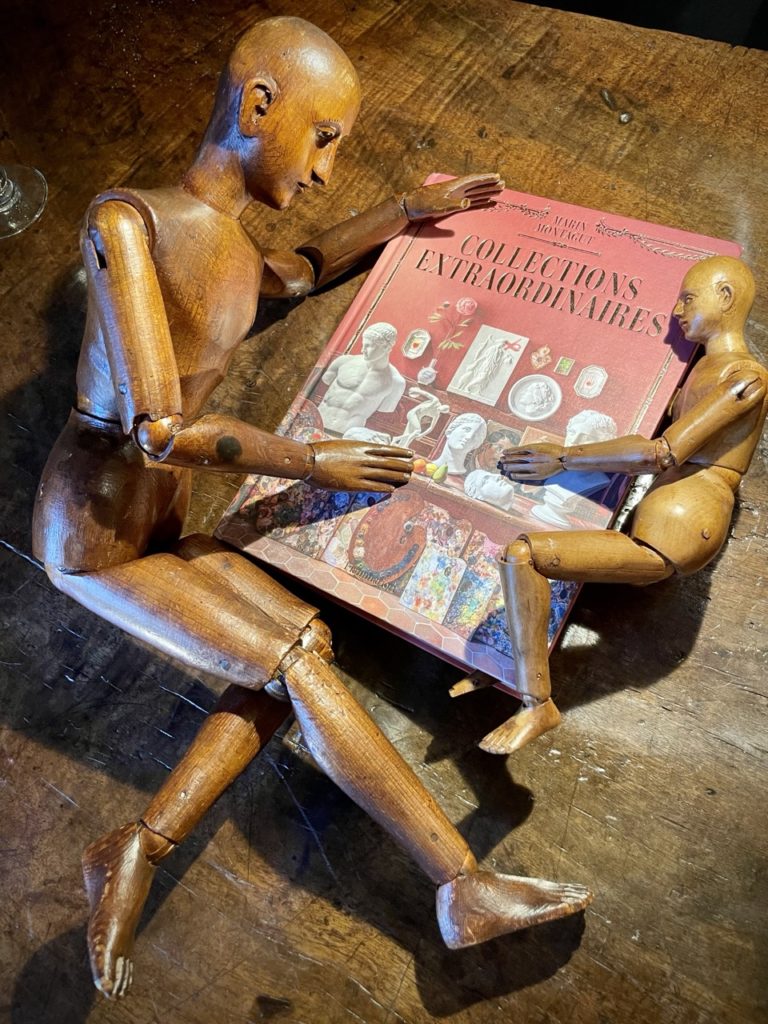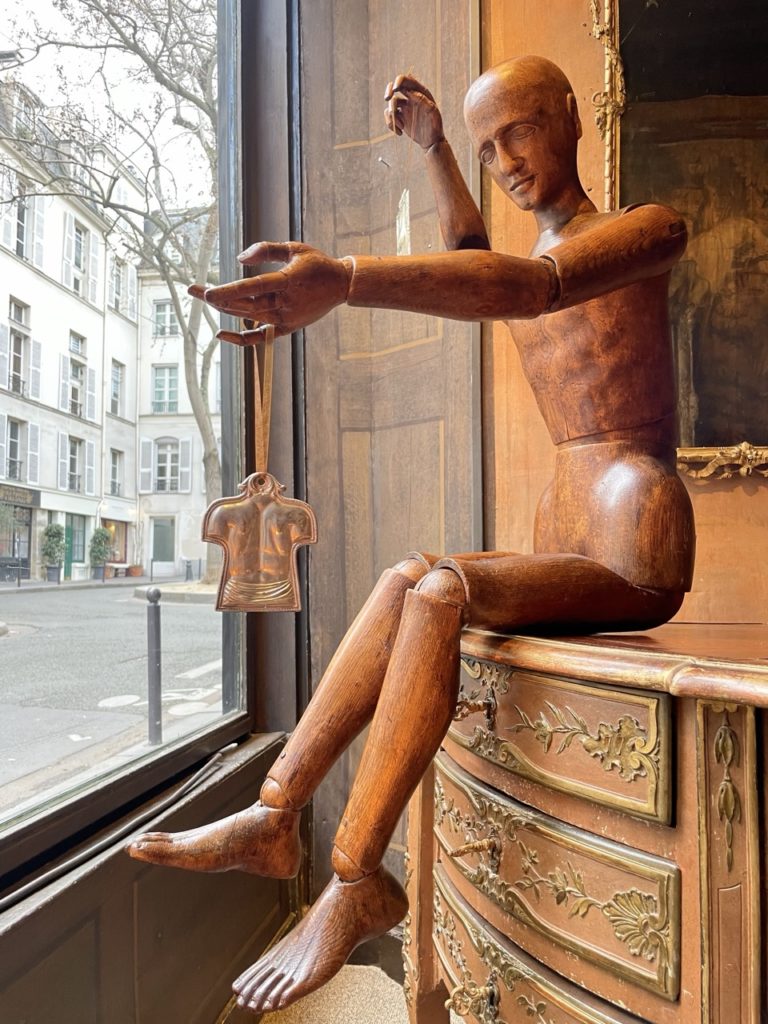While facing the Covid and this turning point in our History, Eijiro Ito made of his reflection on the face and the time, our time,
an art book, “Regarde moi”
The face…
A perpetual invitation to reflection, philosophical, literary, artistic, indecipherable enigma.
In Emmanuel Levinas, behind a face are all faces, is our humanity. This transcendence goes beyond form, annihilates it, to express the very essence of being. And in front of this singular but universal face is born the responsibility that I feel when I look at you.
The face: a gateway to the Other, and from this step towards you my consciousness is born, thank you.
“A face had to answer all the names in the world”, overwhelming poetry by Eluard. Can all the names in the world meet a face? Is it you I’m looking at or my reflection in your eyes? Endless quest.
How did I look at you? Have I reduced you to an object, denied your humanity to make you a consumable product?
This is one of the lines of thought for Eijiro Ito who “looks” at the immense loss induced by the absence of contact, social networks, our modernity so fast and mercantile, the door is closing.
Yes .. how did I look at you?
Eijiro’s work is centred around objects, mannequins, it is no longer bare skin that it is about but of wood, stone earth or papier-mâché, He attaches himself to the marks of the time, it relates this past time to the present and confronts us with ourselves, with our humanity, today.
How am I going to look at you?
” Regarde moi “
Eijiro photographed “faces” at Yveline’s, he made photoengraving of them, a new birth for the object, an illustration of what it already is: multiple, there are as many faces as there are looks on it. which is always the same …
The very process of elaboration, the slow and long artisanal work carried out is in itself a reflection, a reflection, under his fingers with each photoengraving another face was born, depending on the ink, the paper, the pressure. Neither quite the same nor quite different. In one face, all are contained or called to be. The photoengraving presented is a trace here and now, that of a face already so numerous of all the glances already received, and continuing on its way to those he calls. A constant call to contemplate in each one our own humanity.
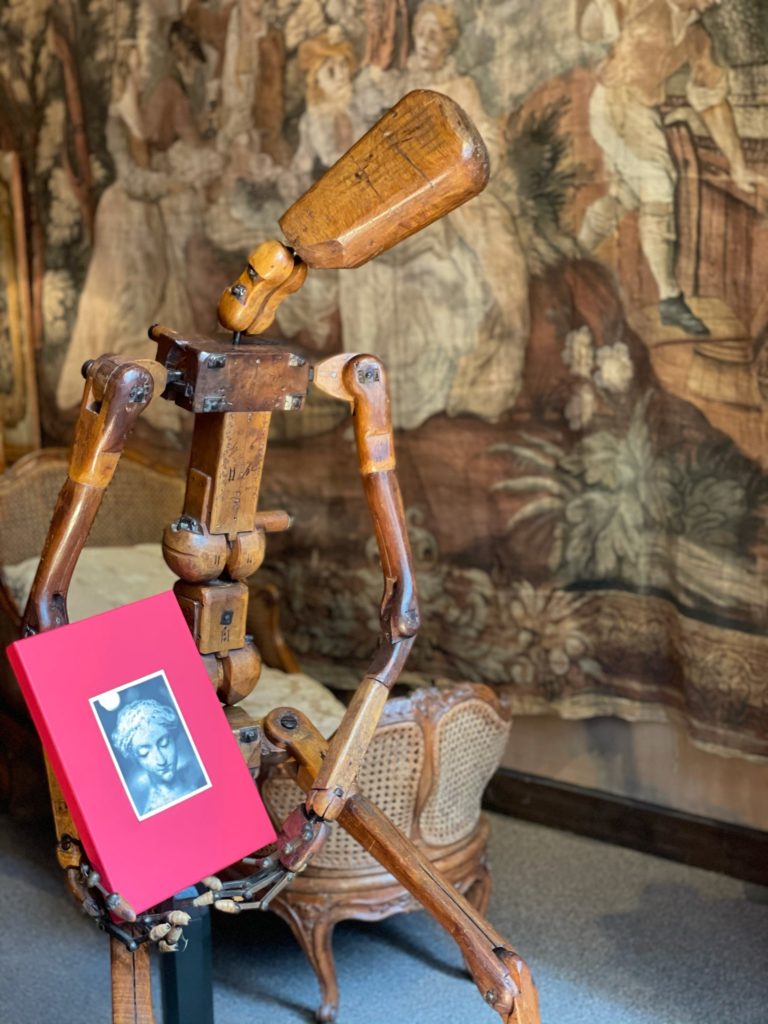
Eijiro Ito, Yveline et Agathe
“Regarde moi”
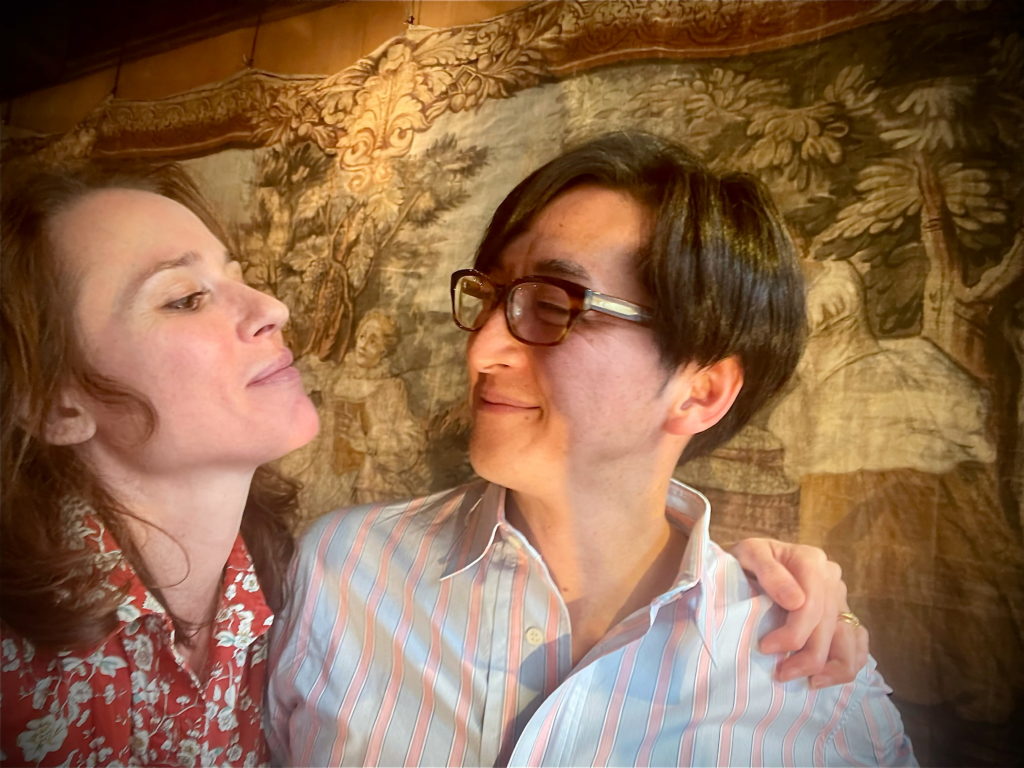
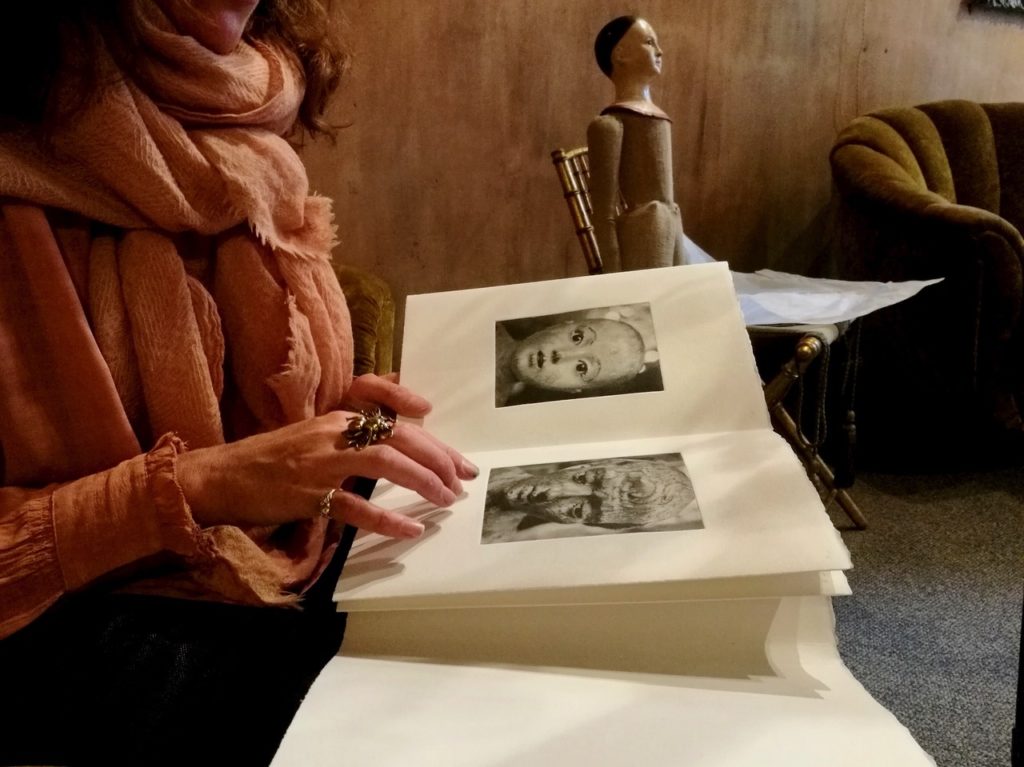
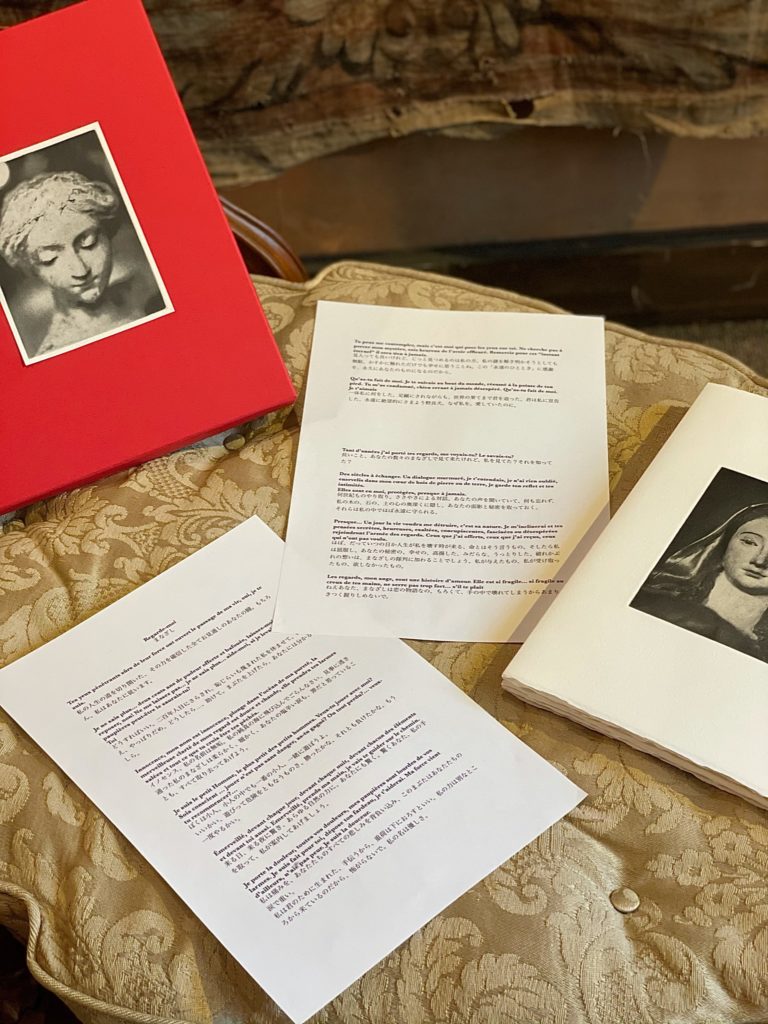
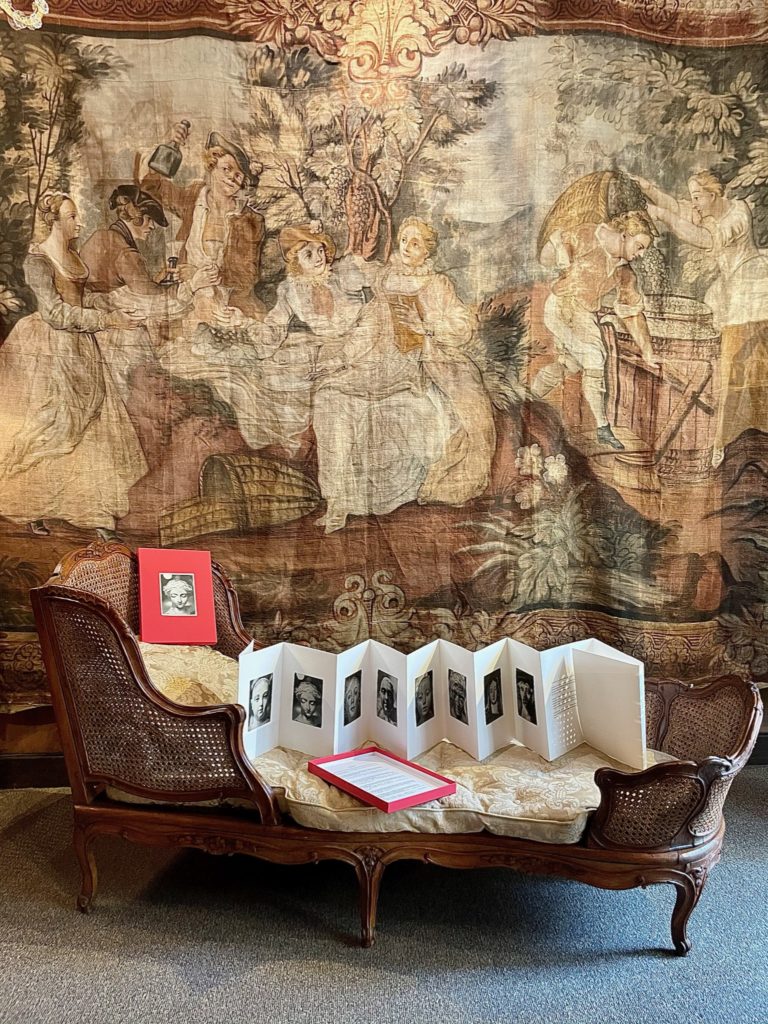
Making of
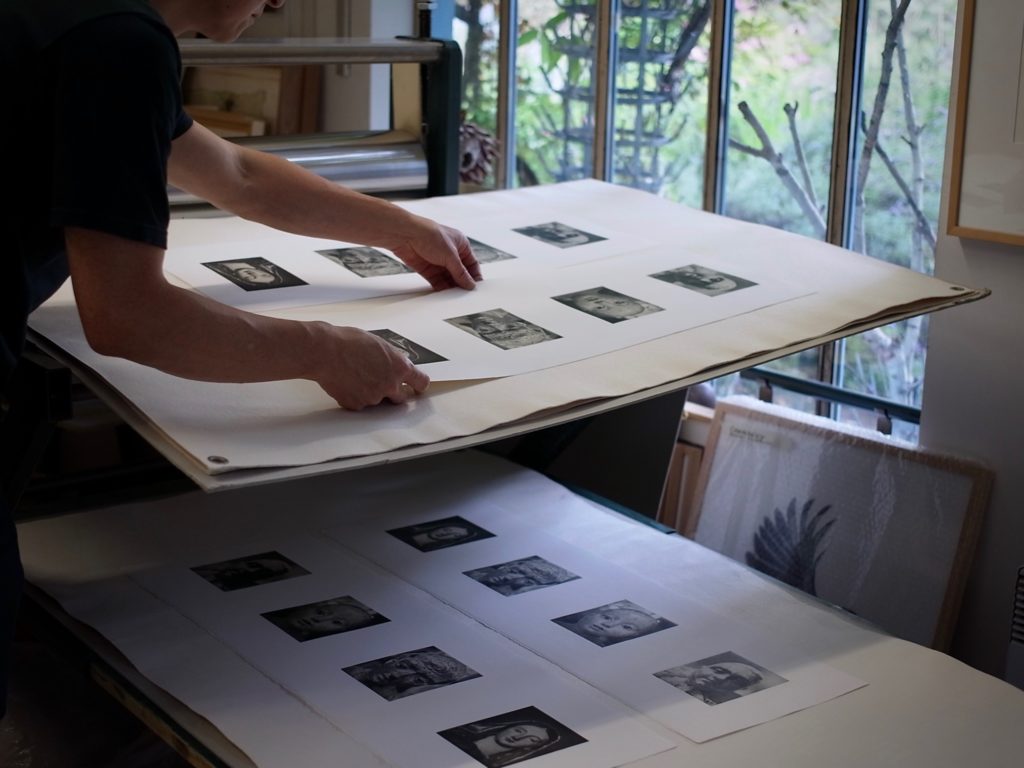
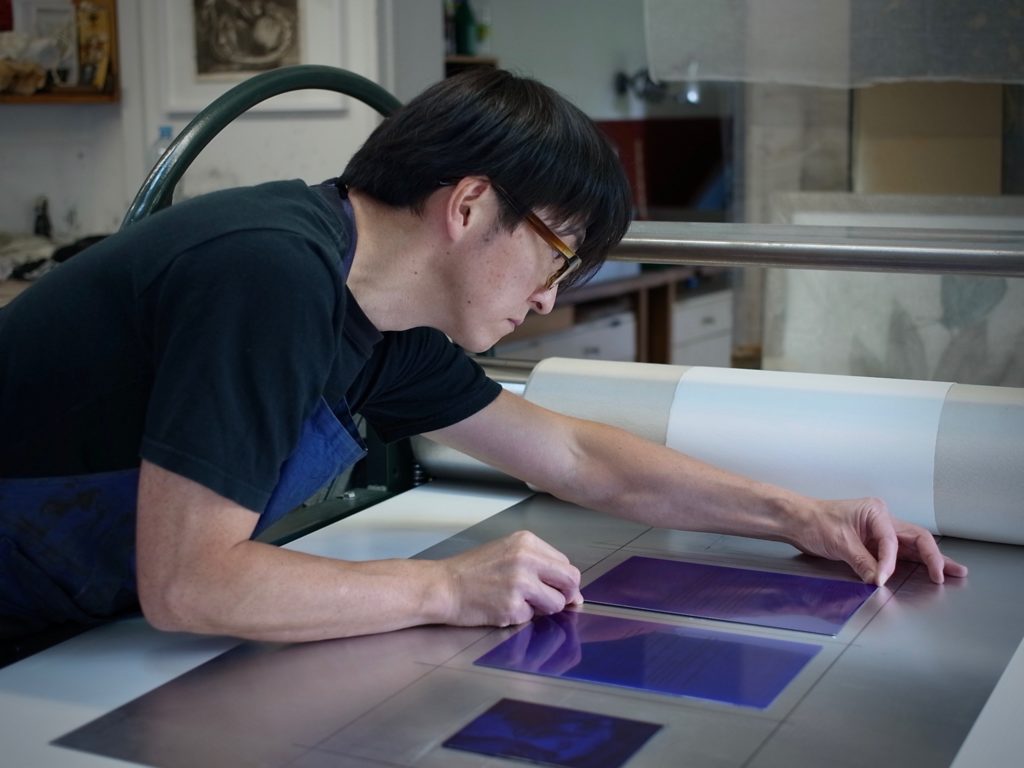
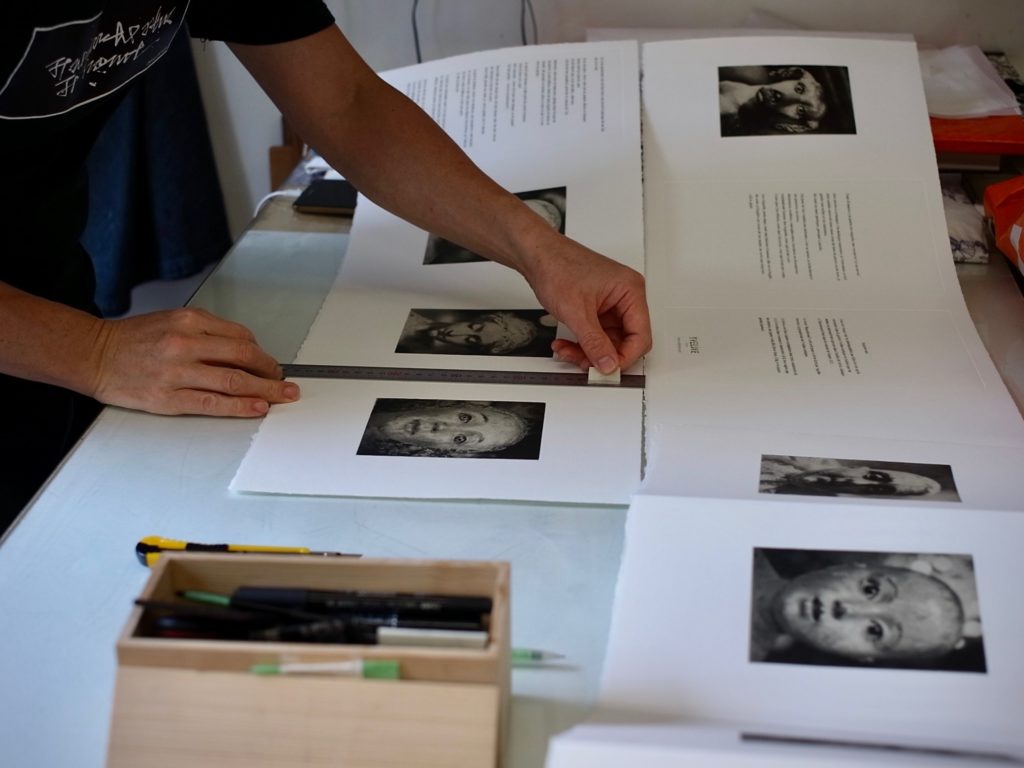
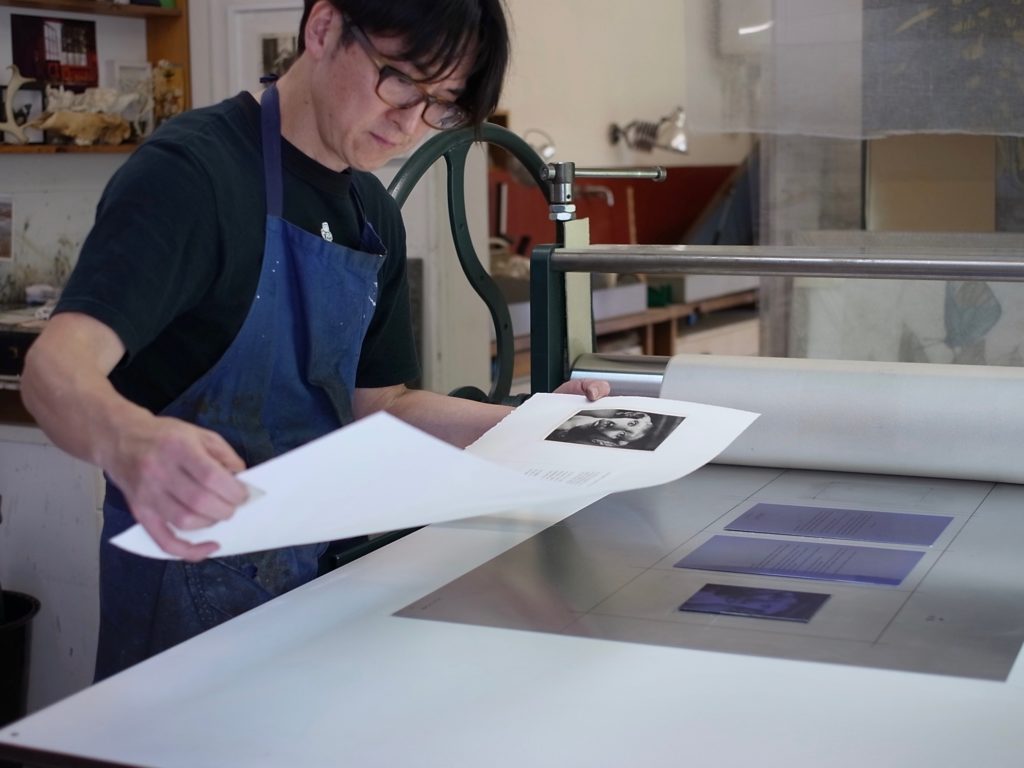
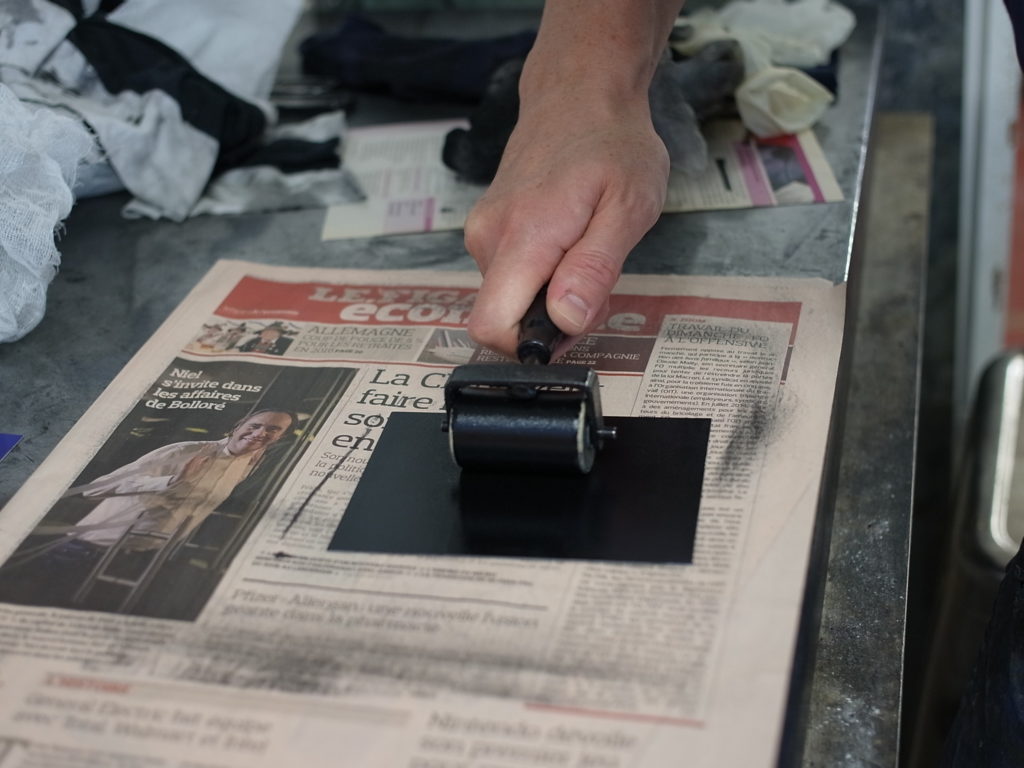
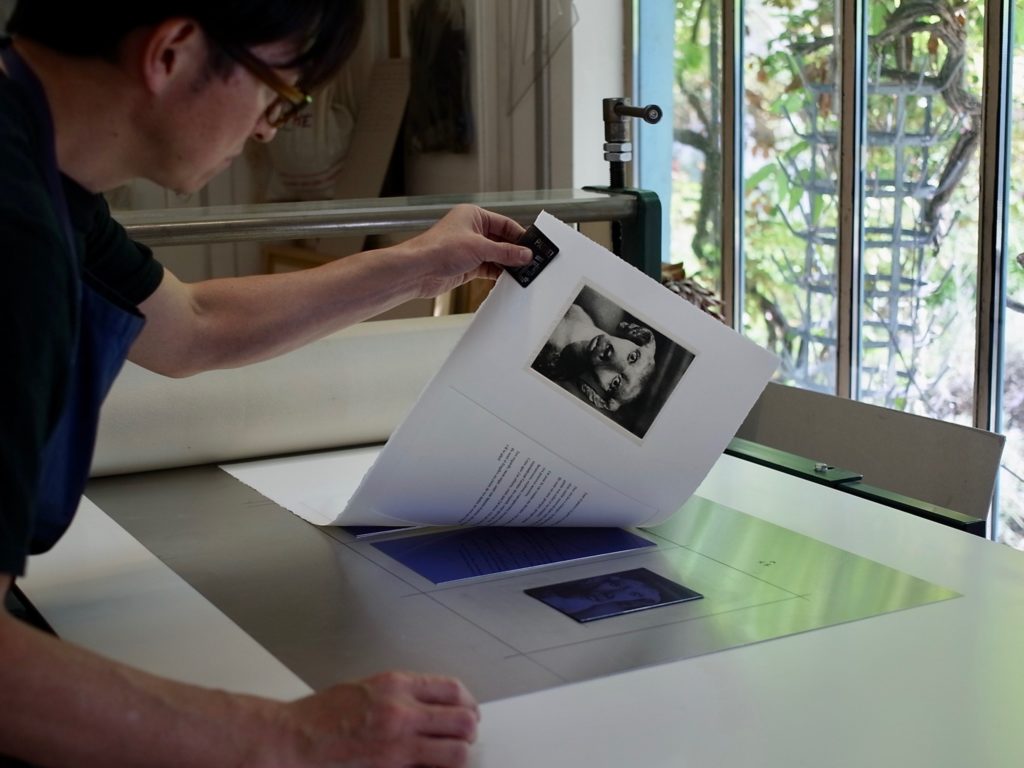
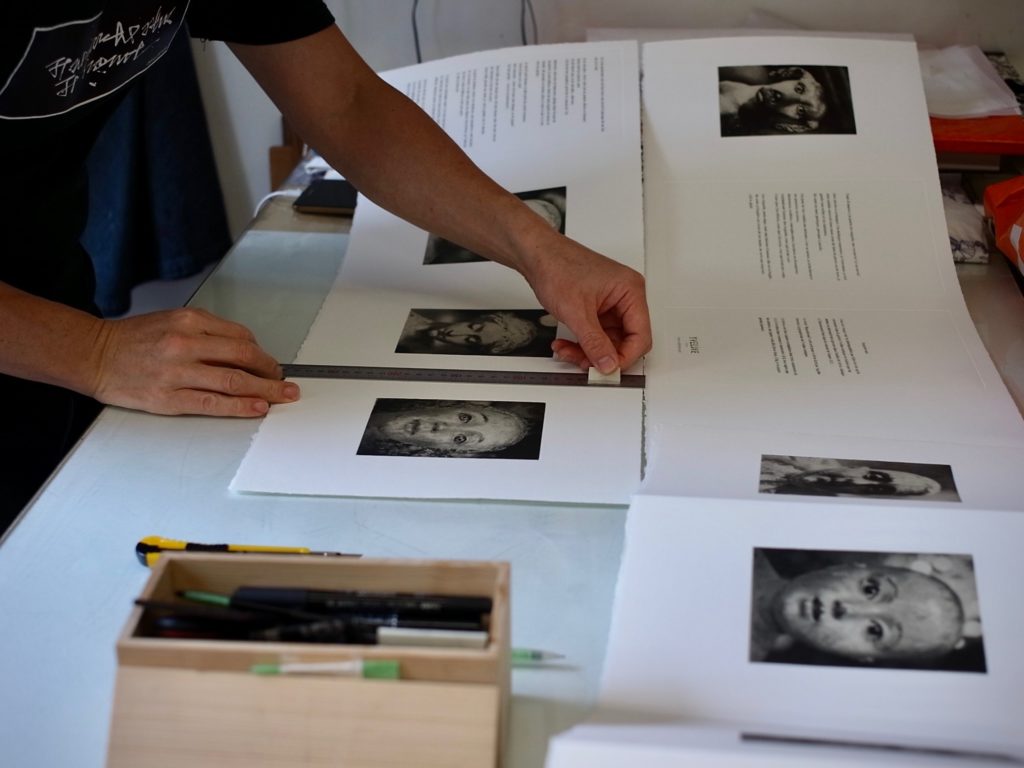
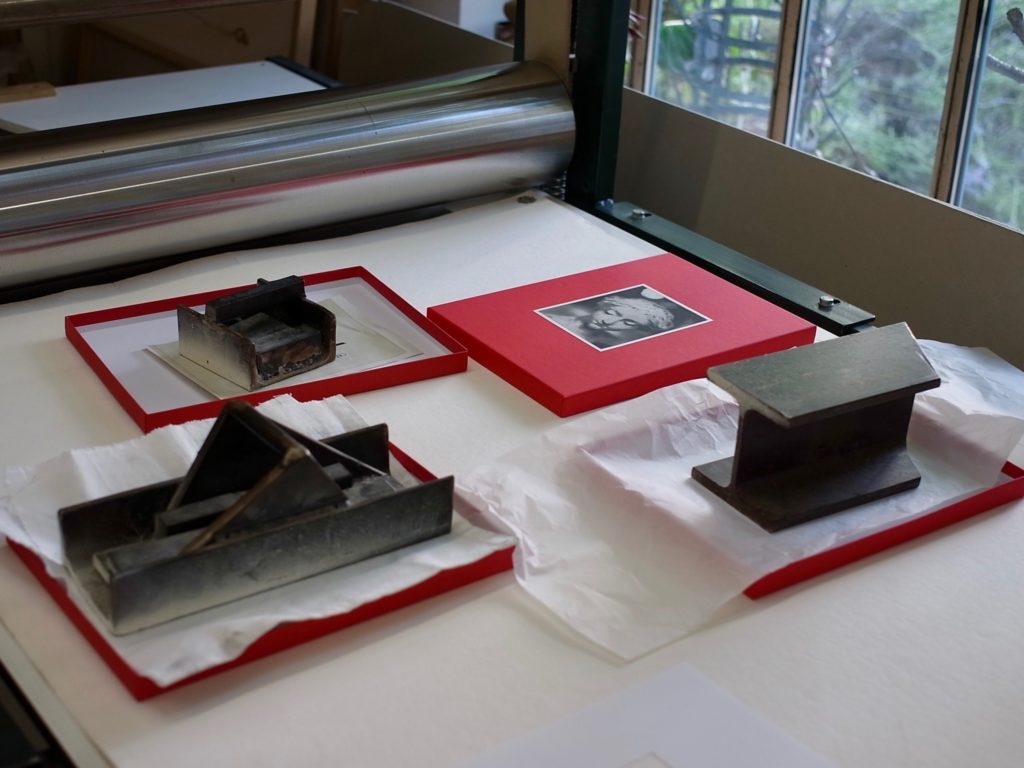
新型コロナウイルスと、この歴史的転機に直面し、伊藤 英二郎が顔と時間、ならびに現代への考察から生み出したアートブック『まなざし』。顔とは、哲学的、文学的、芸術的な探求へと永久に誘うもの、解読できぬ謎。エマニュエル・レヴィナスにおいては、ひとつの顔の背後にあらゆる顔が、私たちの人間性が存在する。この超越により形は消滅し、存在の本質が現れる。特異だが普遍的な顔を見る時に生まれる責任感。 顔とは、他者への入り口であり、相手への一歩から私の意識が生まれるとは、ありがたいこと。 エリュアールの感動的な詩「ひとつの顔が 世界のすべての呼び名にこたえなくてはならなかった」。果たして世界のすべての呼び名はひとつの顔にこたえられるのか。私が見ているのはあなた、それともあなたの目に映る私。探求に終わりはない。 私はあなたをどう見ていた?オブジェとして、人間性を否定して消耗品にしてしまった? それが伊藤の洞察の一つ。作家はソーシャルネットワークの発展に伴う触れ合いの欠如や、素早く移り変わりあまりにも商業主義的な現代により引き起こされる莫大な損失、心の閉ざされた社会に「まなざし」を向ける。そう、それで私はあなたをどう見ていた?
伊藤が扱ったのはオブジェやマネキン人形で、それはもはや素肌ではなく木、土、石、張り子でできたもの。時間の痕跡にこだわり、過ぎた時を現在に結びつけ、私たちを今日の私たち自身や人間性に直面させる。私はあなたをどう見るだろう。『まなざし』伊藤の用いた技法は、イヴリーヌの店の「顔」をカメラに収めて版画にしたフォトグラビュール。それにより新しいオブジェが生まれて、ひとつのオブジェがすでに持つ複数と言う性格をよく表している。同じひとつのオブジェには、向けられたまなざしの数だけ顔がある。 制作の過程そのもの、じっくりと長い時間をかけて行われる手仕事自体が考察、反映であり、版画家の指の下、写真製版を一枚刷るごとにインクや紙や圧力に応じて別の、まったく同じでもなく、まったく別でもない顔が生まれた。ひとつの顔の中に、あらゆる顔が含まれているか、そうあることが期待される。掲載されたフォトグラビュールは今ここにある痕跡、多くのまなざしを受け、すでにたくさんになりながら、各人に自身の人間性を熟考せよと絶え間なく呼びかけ、その者たちへと歩みを進めるひとつの顔の痕跡だ。
Eijiro’s work on Yveline since 5 years will also be shown in Kyoto in October in partnership with “Nuit Blanche”
You will find more information about this work on theses links:
https://nuitblanche.jp/fr/evenements/diaporama-fotozofio
https://nuitblanche.jp/fr/lieux/institut-francais-du-japon-kansai
https://www.institutfrancais.jp/kansai/fr/
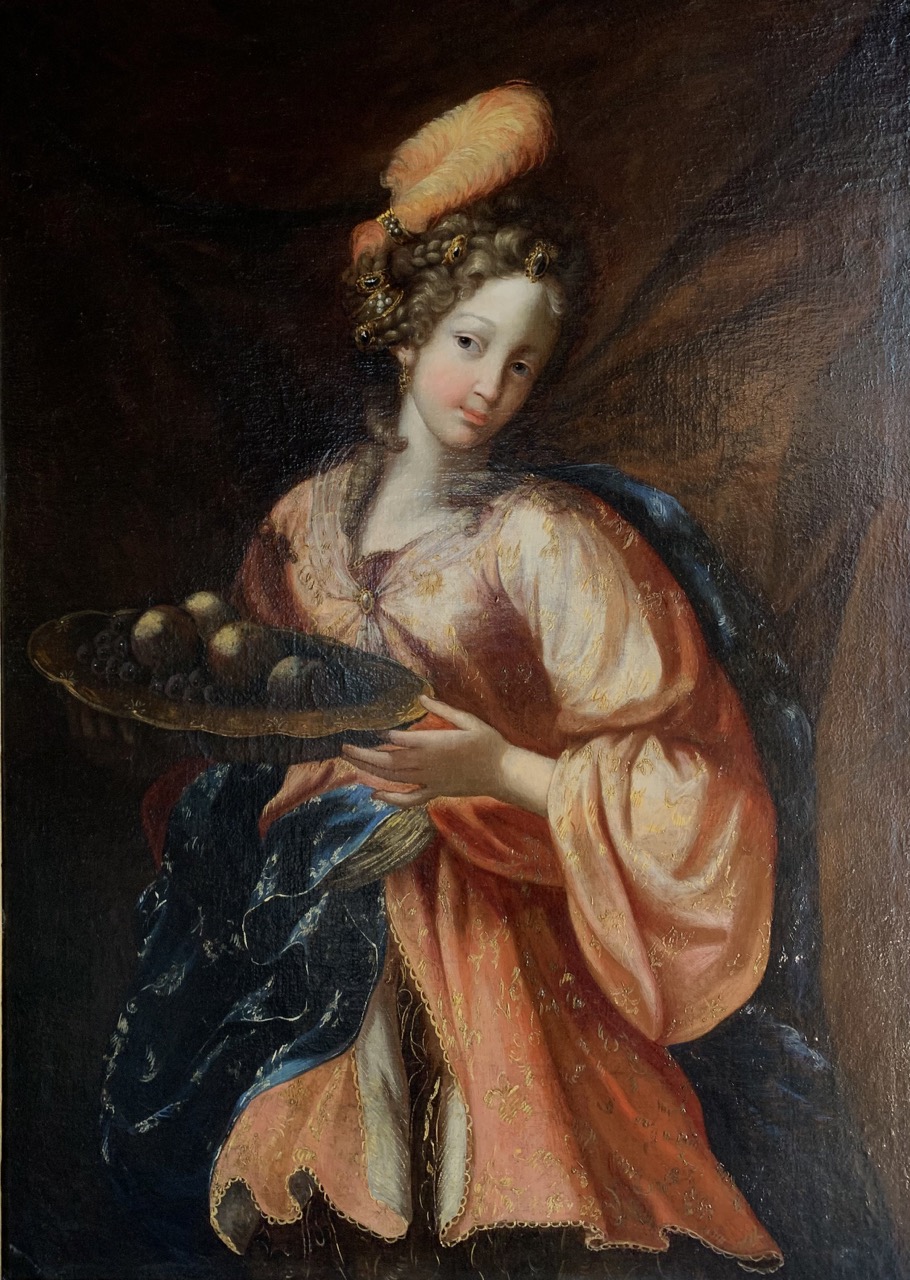
Hair stories
The art of hair styling,
could this be a simple artifice? are we talking about lightness, as with this feather in the sumptuous hairstyle of this young girl. She adds pearls and evokes her purity. The artifice becomes a symbol.
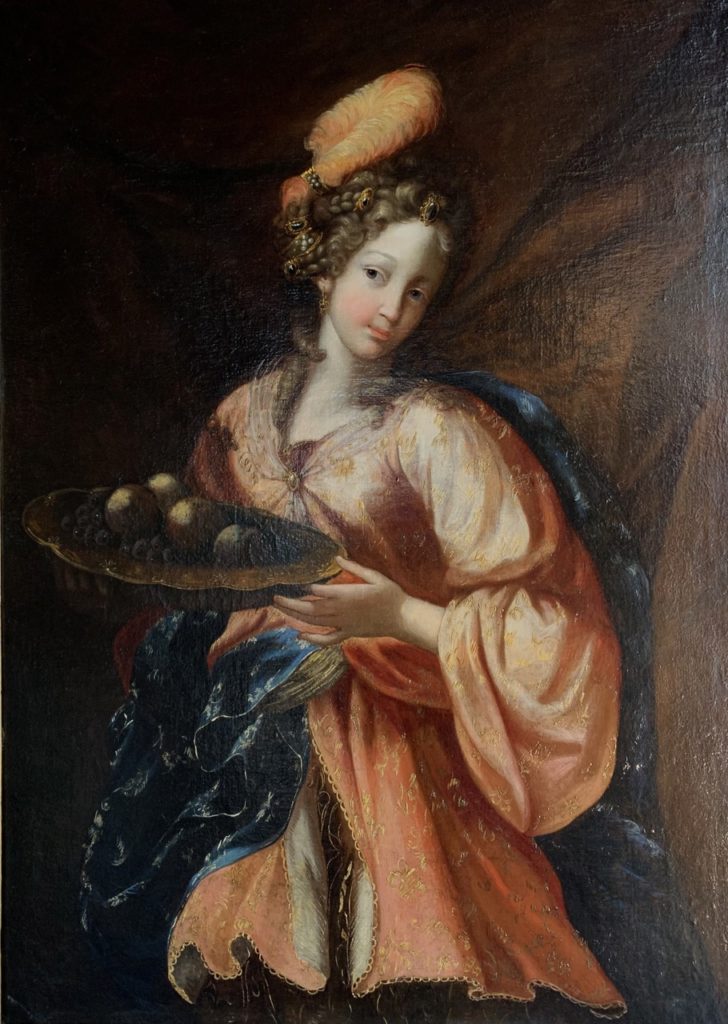
Pretty names, the “garcette” hairstyle, of Spanish origin and made fashionable by Queen Anne of Austria, lasted from the 1630s to 1660. This portrait is a perfect illustration.
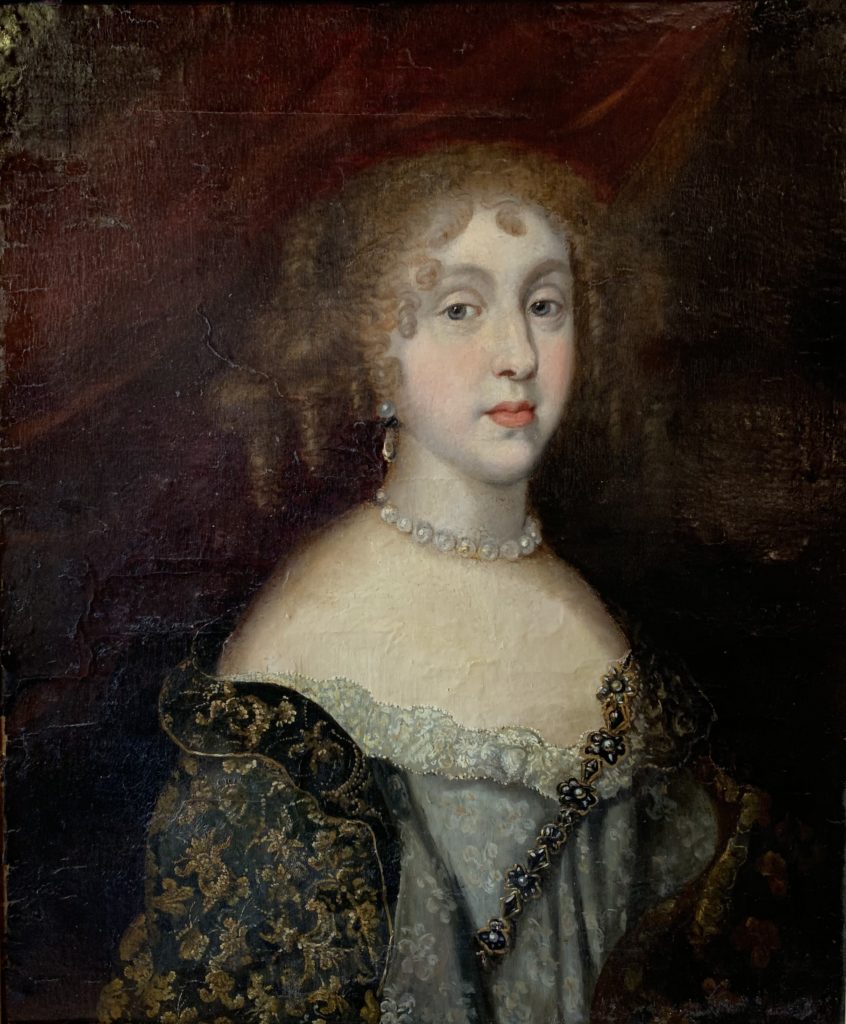
The hairstyle is a matter of court, we want to please the King.
Fashions in the 17th century varied with Louis XIV’s favorites setting the tone. Madame de Montespan with her long curls then the Marquise de Fontanges with her hair disheveled during a hunt, and from one day to the next the entire court with a lot of hairpieces gains 50 cm in height.
The wig has been a must for men since Louis XIII to hide his baldness, a symbol of the decline of virility.
Louis XIV, after having had magnificent hair, resorted to the same artifice…
The wig not only hides the harmful effects of age but also those of syphilis which causes hair loss and… lice infestations.
These often-imposing headdresses are uncomfortable, they are very heavy and cause itching. Something impossible to detect in the attitude of this Italian fabric merchant and his flirtatious gaze…
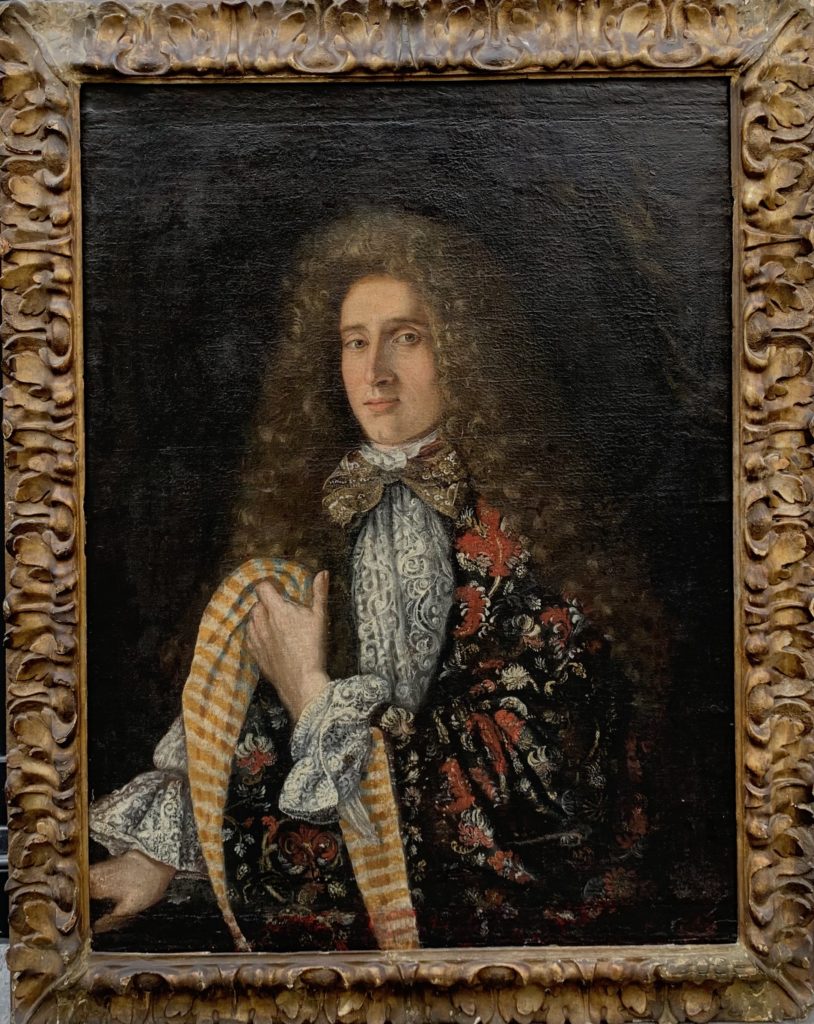
The French Revolution is over, and its share of executions on the Place de la Révolution. The executioner releases the neck and cuts the hair short the guillotine can fall.
In solidarity with the victims the hair is worn short, and the exposed neck was draped with a scarlet ribbon. The hairstyle “à la Titus” is a political act.
Our young Lady is an activist!
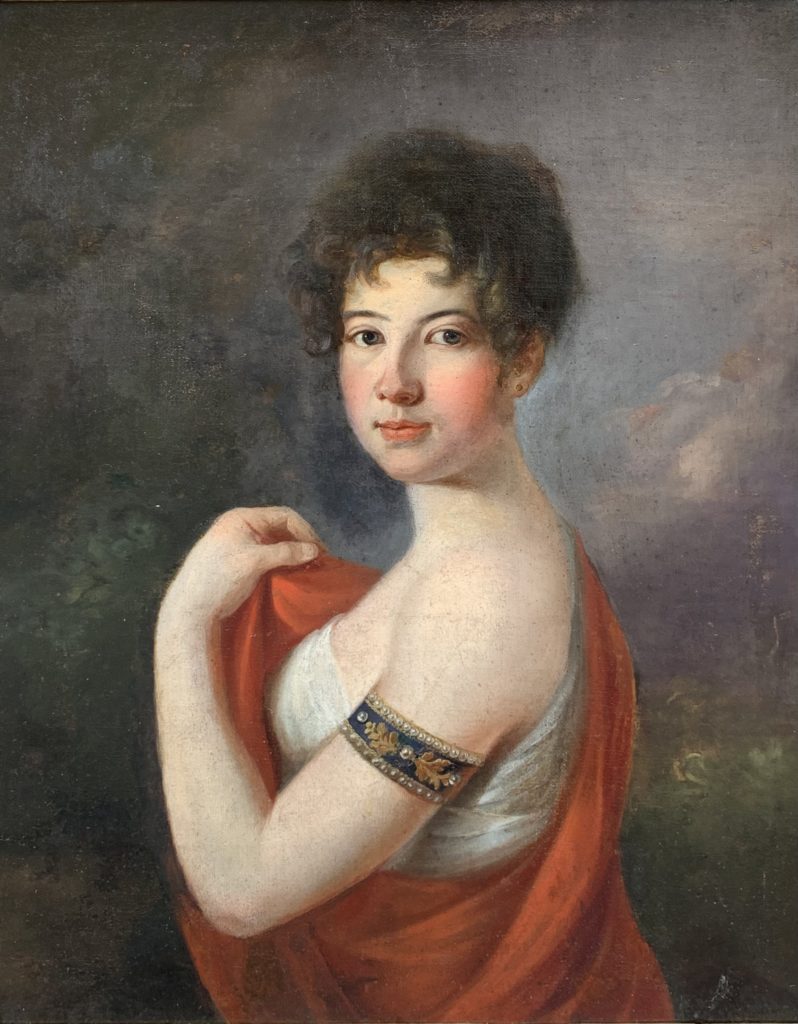
And what can we say about this little cutie and his “dog ear hairstyle”, an attribute of the “incroyables”, he celebrates in his own way the end of terror, we are on Directoire: the youth are exulting! for a few more years…..
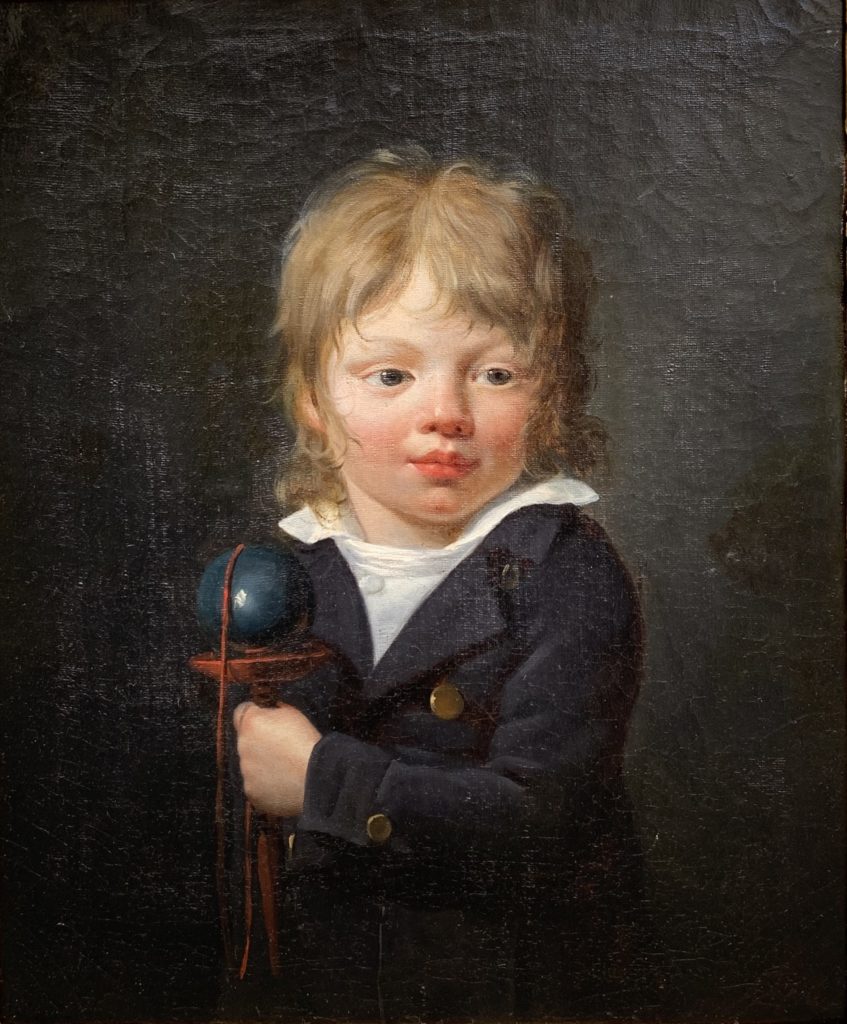
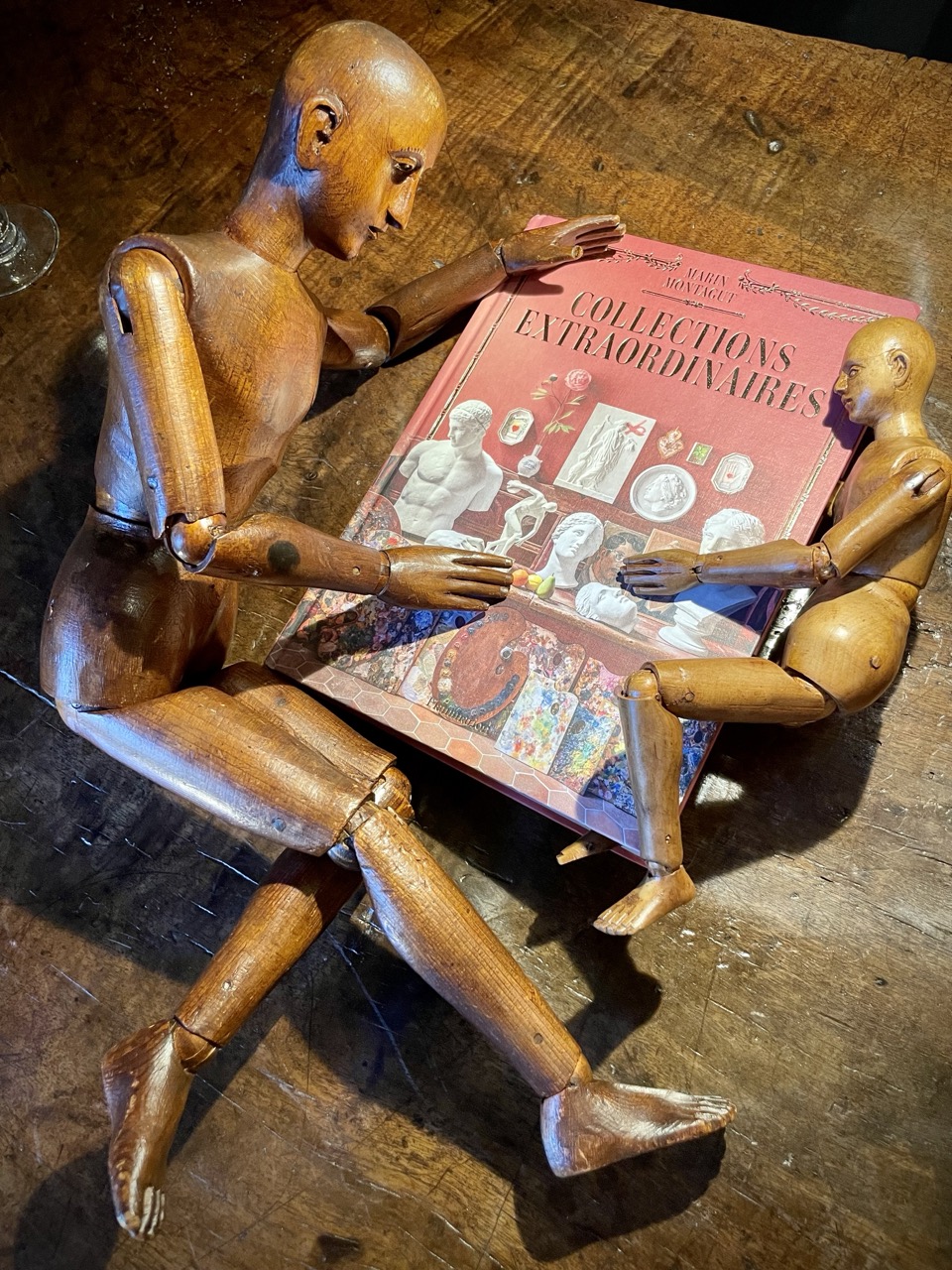
« The artist mannequin’s a poetic drift»
On the occasion of the release of Marin Montagut’s book on collections: “extraordinary collections” in which my collection of artist models appears, I would like to write you a few words on the subject…
The manikins, weird, did you say weird ?
Essential for artists who study the drapery, light and composition of works thanks to its silent and still presence, it is the ideal companion! always docile, enduring and silent… he turns a blind eye to weaknesses and mood swings…
Here we touch on the intimacy of the artists, and the strange relationship that can develop between them becomes obvious. Favorite accessory of a creative life.
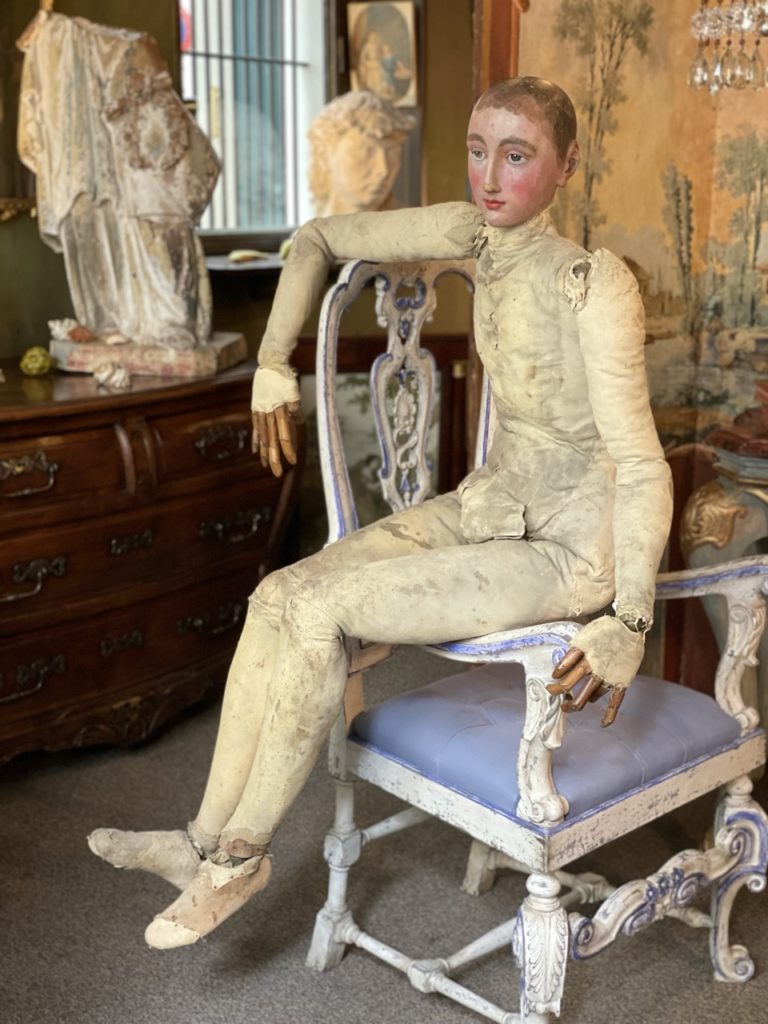
Covered with skin, plant fiber padding. Polychrome carved wooden head.
Height: 164cm
France, circa 1760
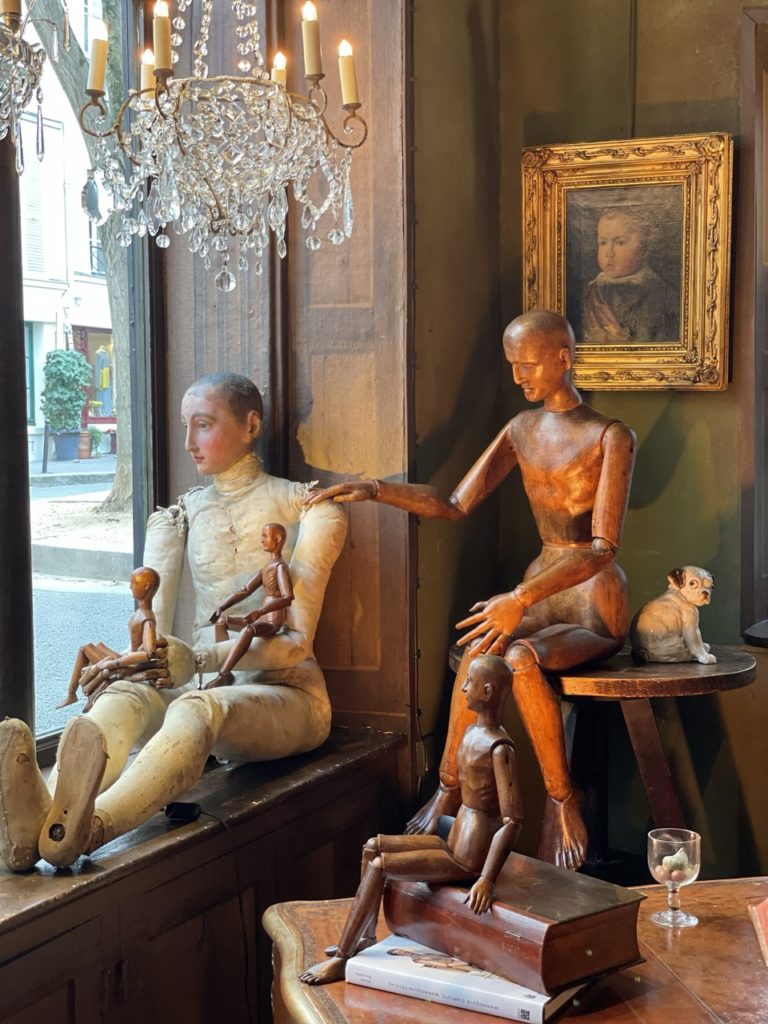
Could it be the reminiscences of this link that reach us?… Few of them have withstood the time and the numerous manipulations linked to their use, they are par excellence collector’s items. Already very expensive at the time of their creation, artists exchange them, before using them unceremoniously.
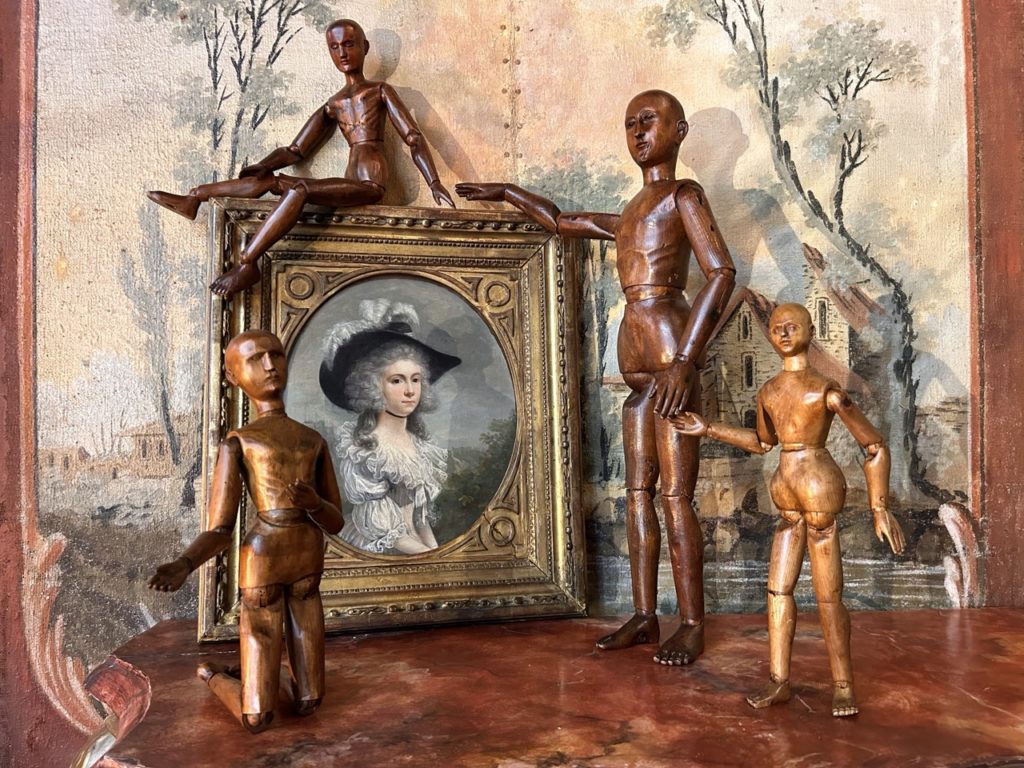
Kneeling mannequin H: 40 cm
Mannequin on frame H: 40 cm
Standing mannequin H: 57 cm
Standing mannequin H: 33 cm
France, circa 1840
Until the 19th century, it was frowned upon to detect its use in a work that “smells like a manikin”
Later the artist will deliberately highlight his manikin, from a tool it becomes a subject and a work of art in itself.
It is found in numerous compositions, it lends itself to all extravagances, to all poses, as evidenced by the numerous silver prints kept at the Musée d’Orsay.
The myth of Pygmalion is never far away, zany poetic or erotic obviously, He is the partner of all inspirations.
Eijiro Ito
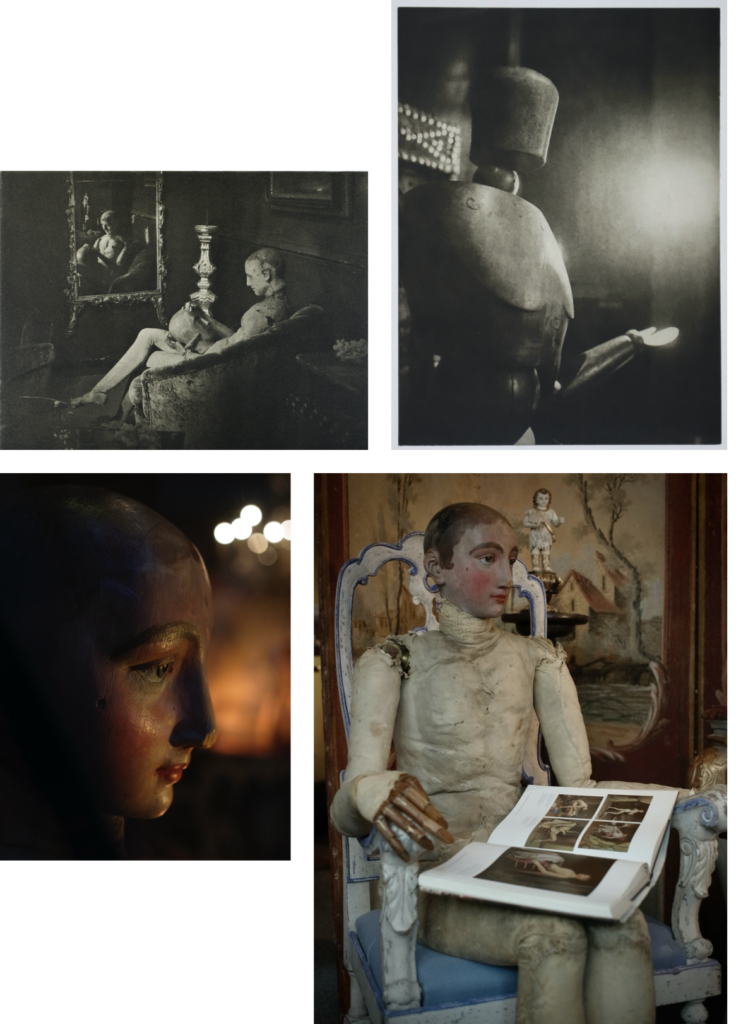
Eijiro Ito is a Japanese artist who lives and works in France in photoengraving. He often comes to Yveline to take and give “visions”.
The way he looks at the manikin in the store reveals this artist-model relationship. They come to life in his work, they are subjects in their own right, with their history, their past and what they show of their mysterious presence. Like a model living in his imagination and the memory of this moment of life left on the photoengraving.
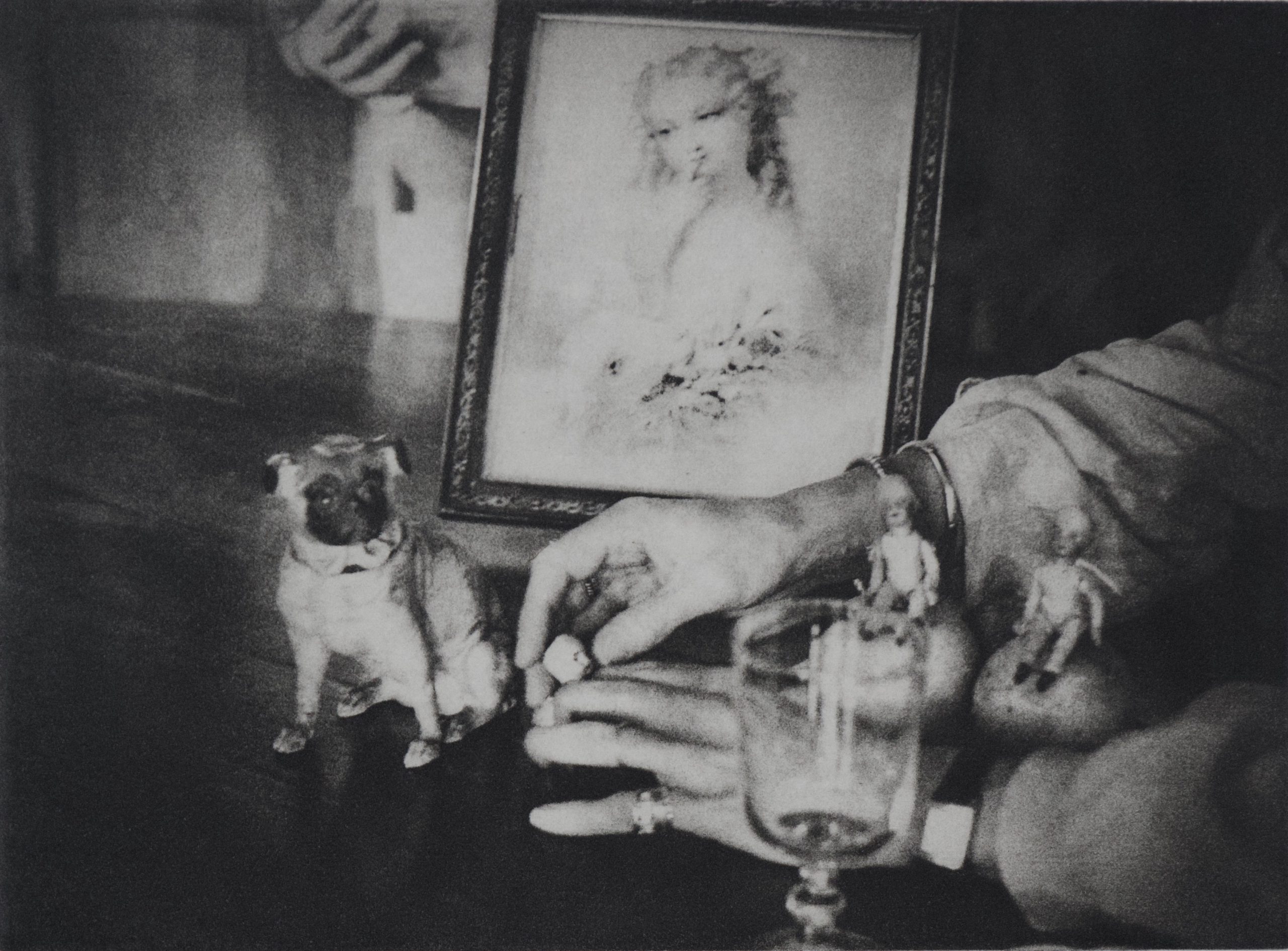
Eijiro Ito, « once upon a time at Yveline’s »
Eijiro Ito was born in Japan in 1971, he has been living and working in France since 1995. You can find a list of his exhibitions on his website.
I heard that the oldest roundabout in Paris was the Furstemberg Square. It reminds me of the horse-drawn carriages going back and forth and I imagine this time, I go back to the memory of the place.
My meeting with Yveline was sudden. When I walked past the gallery, it was love at first sight and I immediately felt connected with what she was expressing. I wondered if centuries-old exhibits would make another trip with their new holder.
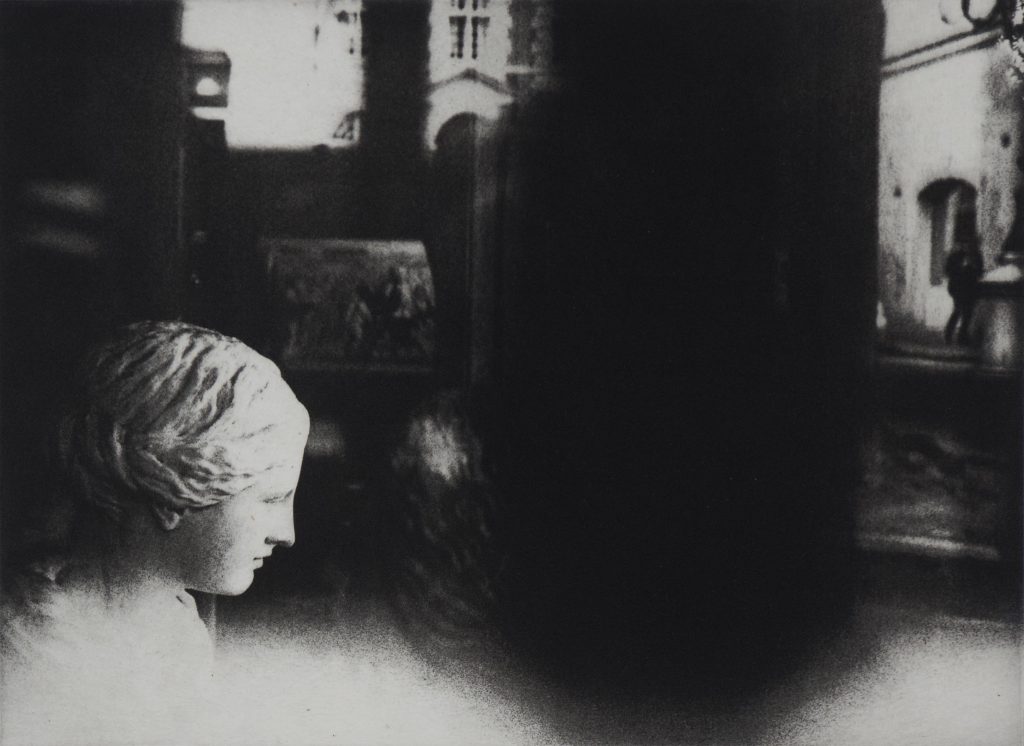
A few weeks later, I returned to the gallery with the photo-engraving I had made to get the favor of integrating it into my works. And when I asked Agathe if I could continue to take other shots and turn them into artist’s proofs, she opened the door wide.
Every time I walk past the gallery, I’m like a traveller randomly photographing a scene in a shop window. The words “passage” or “stroller” used by Walter Benjamin resonate in me.
One day, Agathe told me that “this place must be a place of peace and harmony.” I realized that this corresponded to what I was looking for and my intuitions took shape.
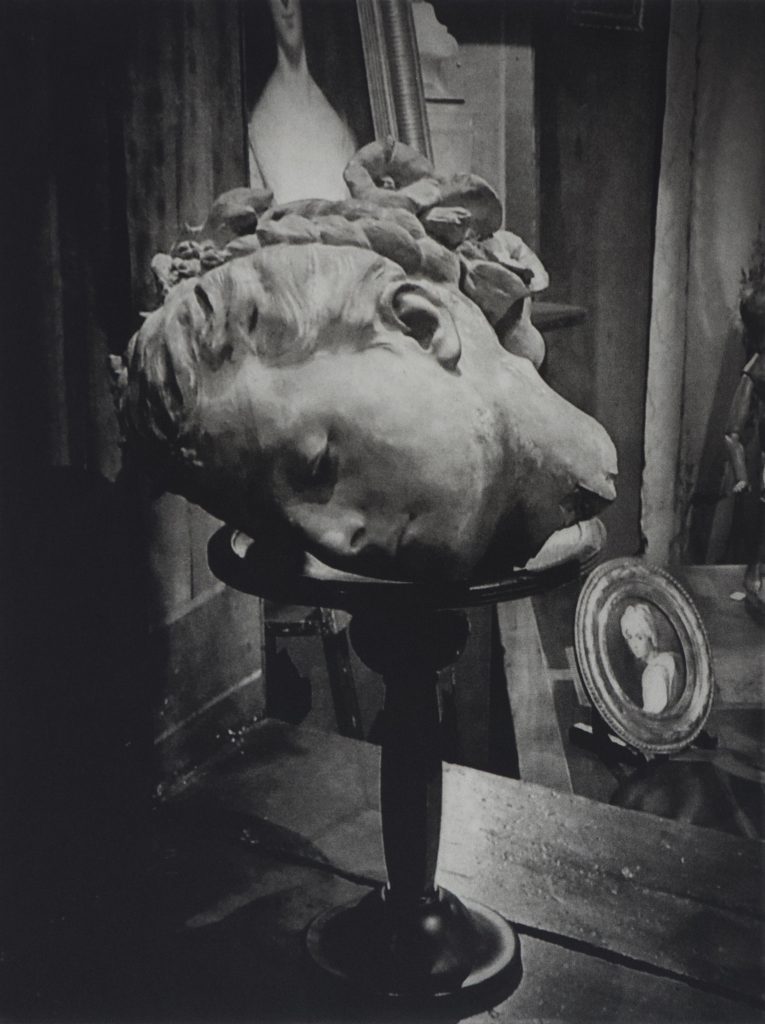
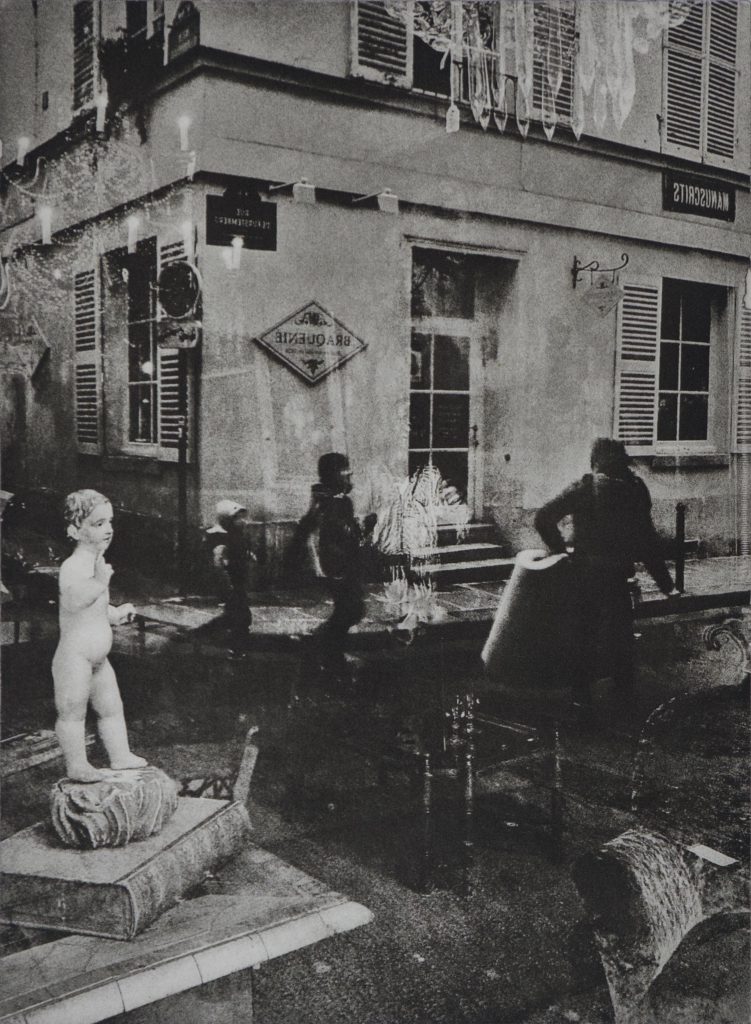
Four years have passed since then and I wonder about the changes in our globalized, highly capitalist and consumerist society. But that is probably not the point. This place certainly has much more to teach us.
As an engraver and artist, the notion of reproduction has always challenged me. Photography and engraving have symbolically coexisted in my work to challenge the concept of reproduction and the consumer society in which we live.
I embody the “wanderer” (the one who walks). The duplicity of reality and fiction seduces me as it embodies, reflected in shop windows as I walk the streets. This is the source of my inspiration; my works result in my know-how in ink and paper.
My camera fixes an image of the world around us, the action of the engraver and the fine scratches it draws on the plate call my memories and print my emotions.
Eijiro Ito
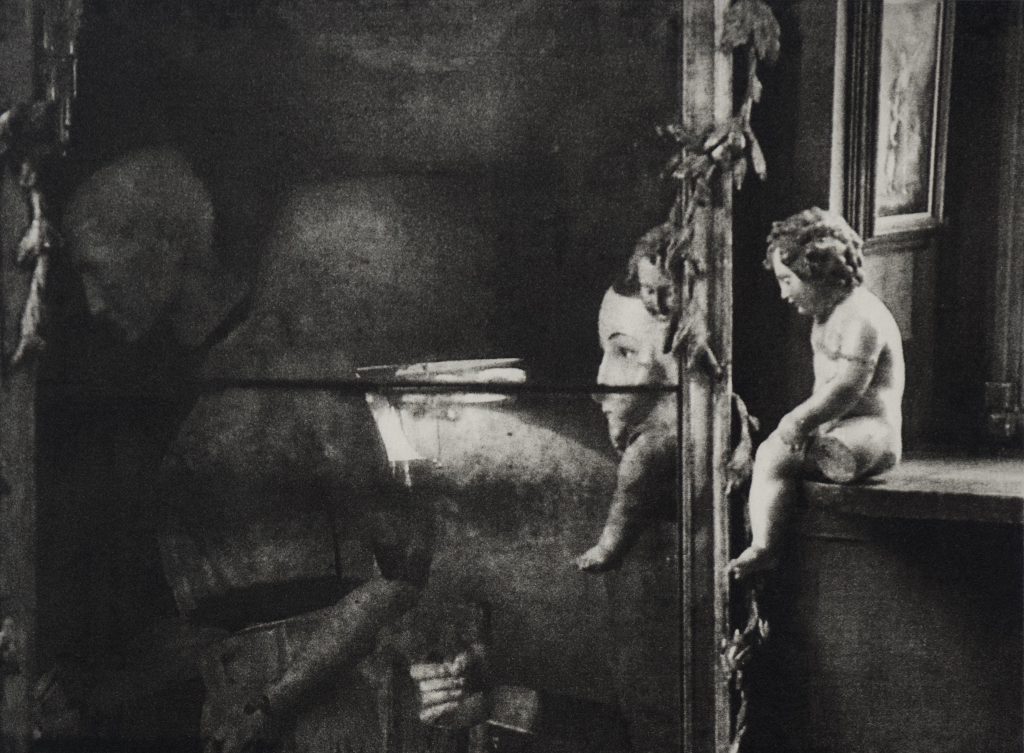
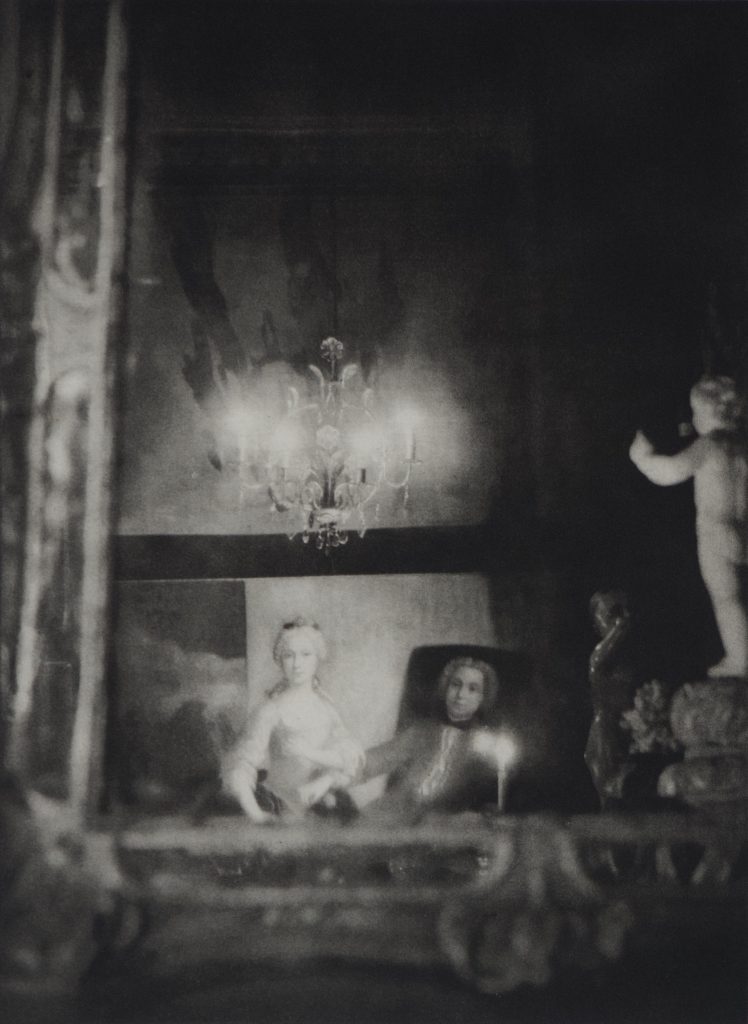
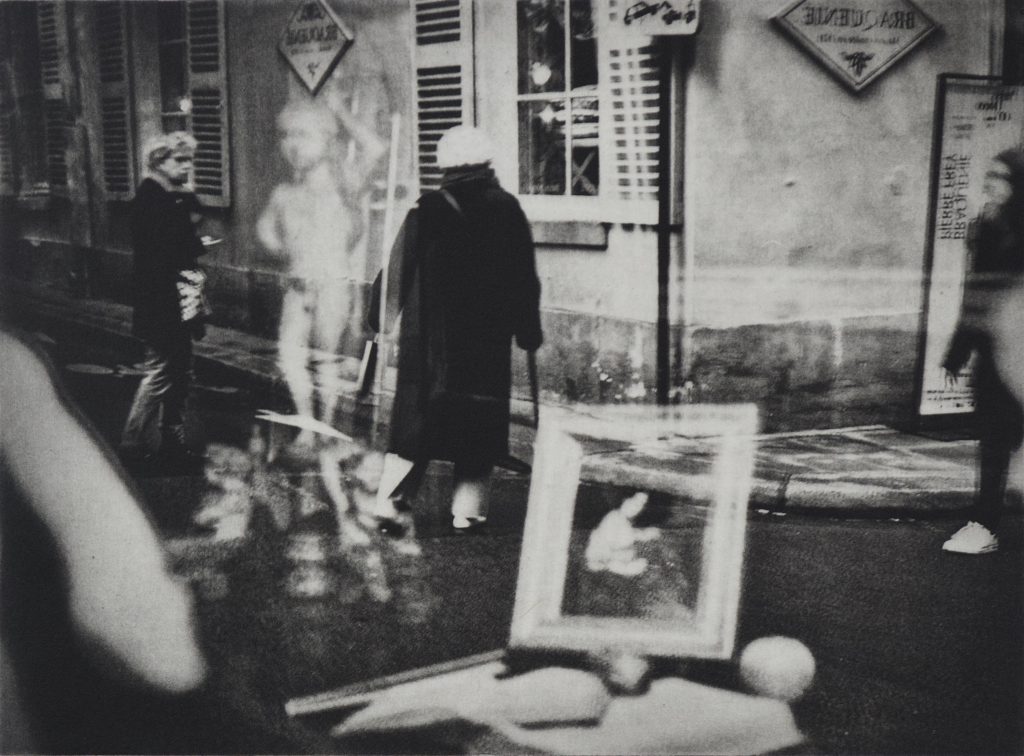
Here is a link to a video of Yveline’s trip.
J’ai pense utiliser le jazz de Bill Evans “A Time For Love” pour ce video de la musique au début.
A Time For Love George Shearing & Don Thompson
Mais je l’ai arrêté à cause de problèmes de droits d’auteur.
J’ai senti que l’œuvre des images ont une preuve de “Un temps pour l’amour”. C’est aussi une question de “Harmonie et de la paix”.
Je me suis donc promené dans le bois de Vincennes et j’ai enregistré les chants des oiseaux et le son de babillage du ruisseau. Et le son des aiguilles de l’horloge.
